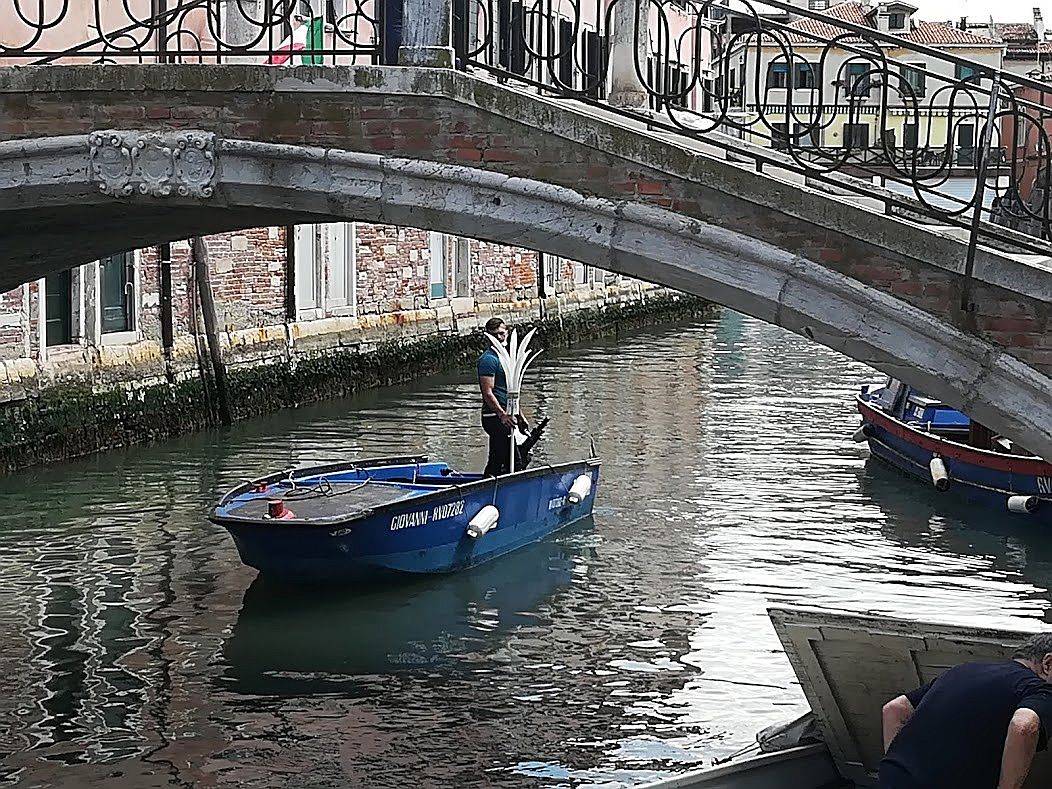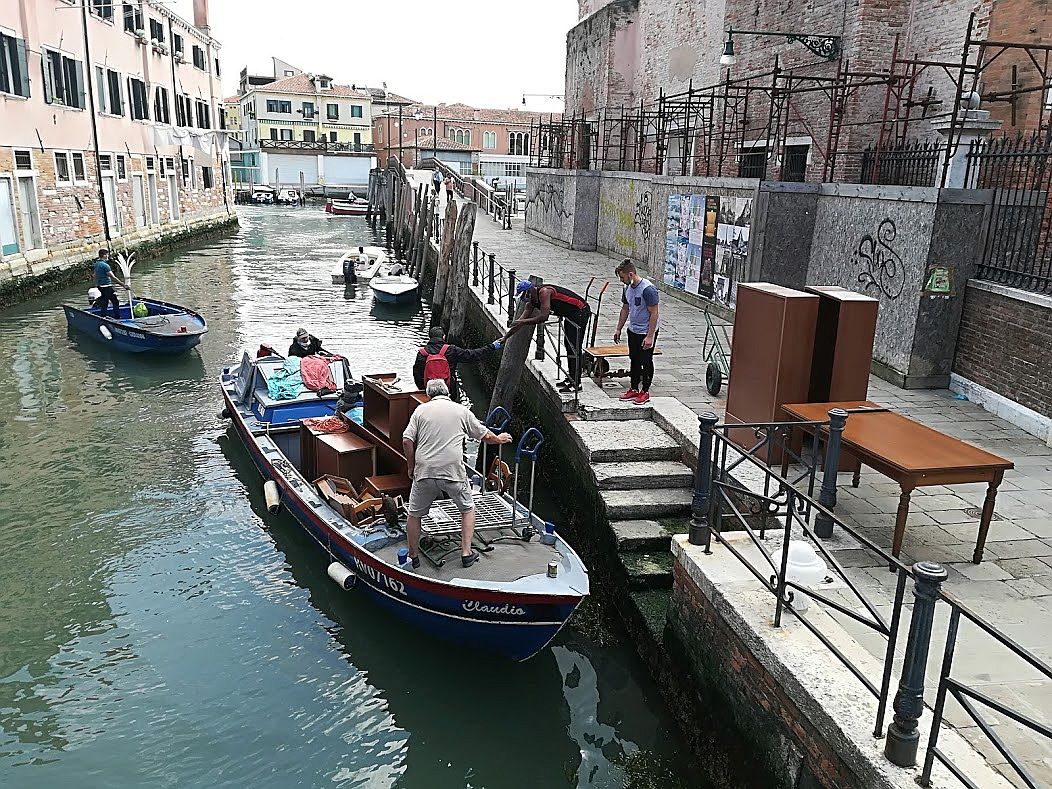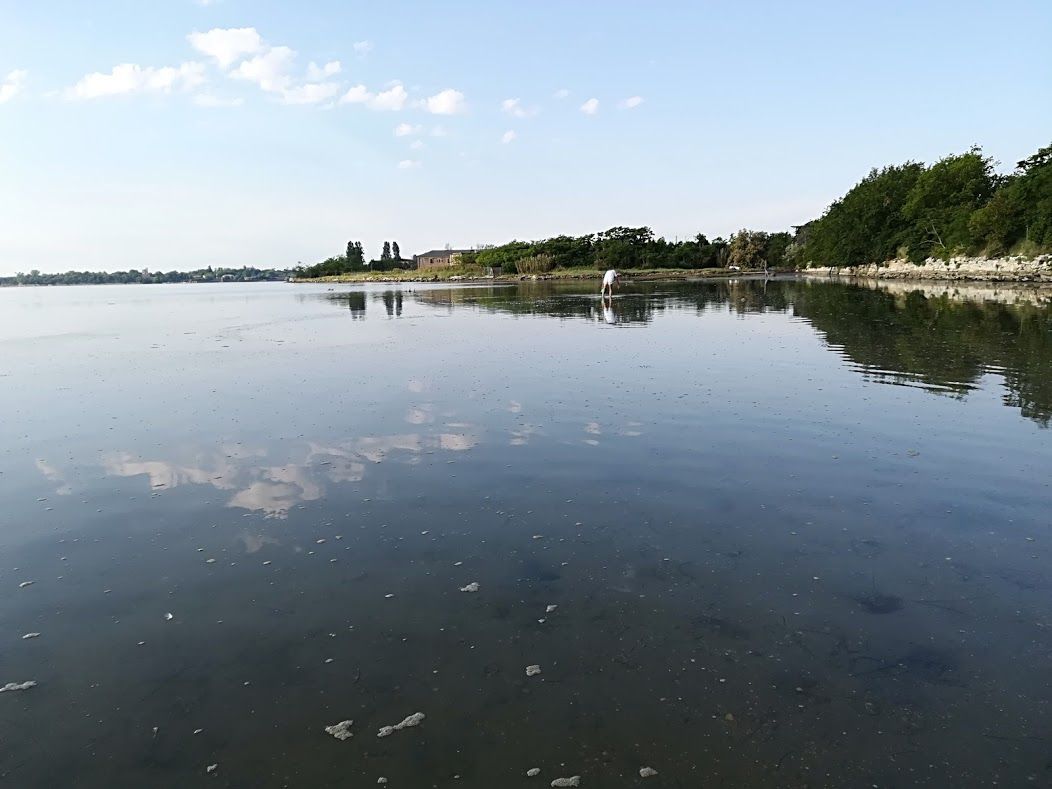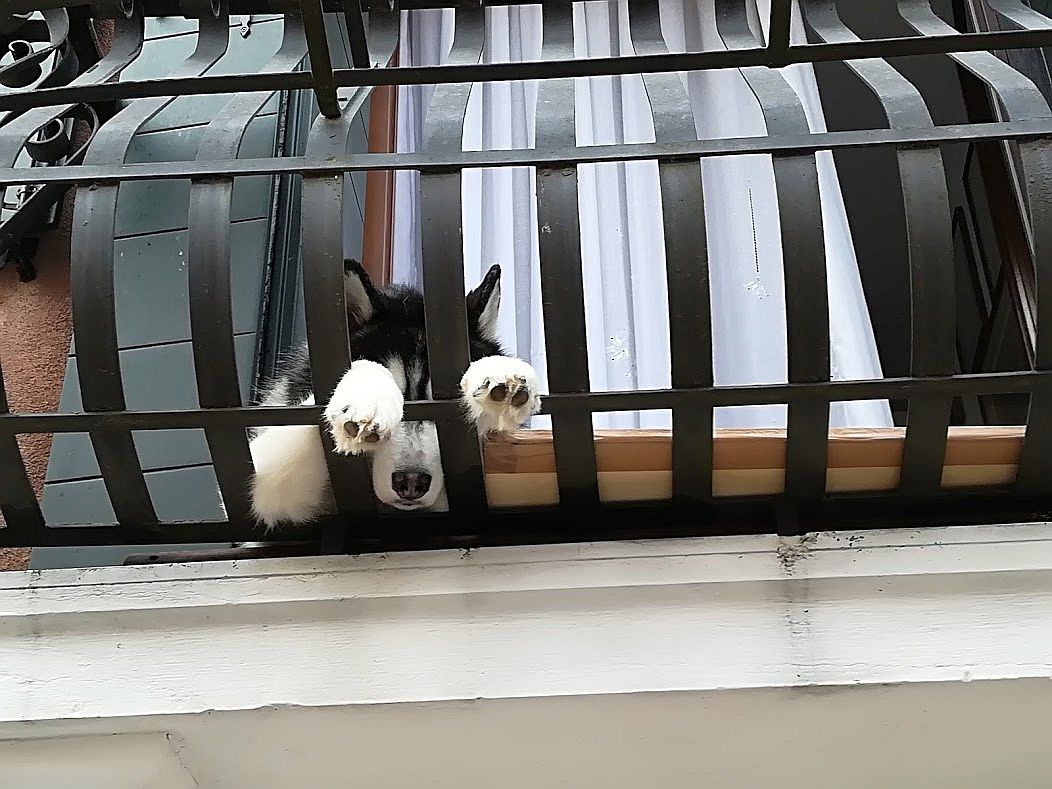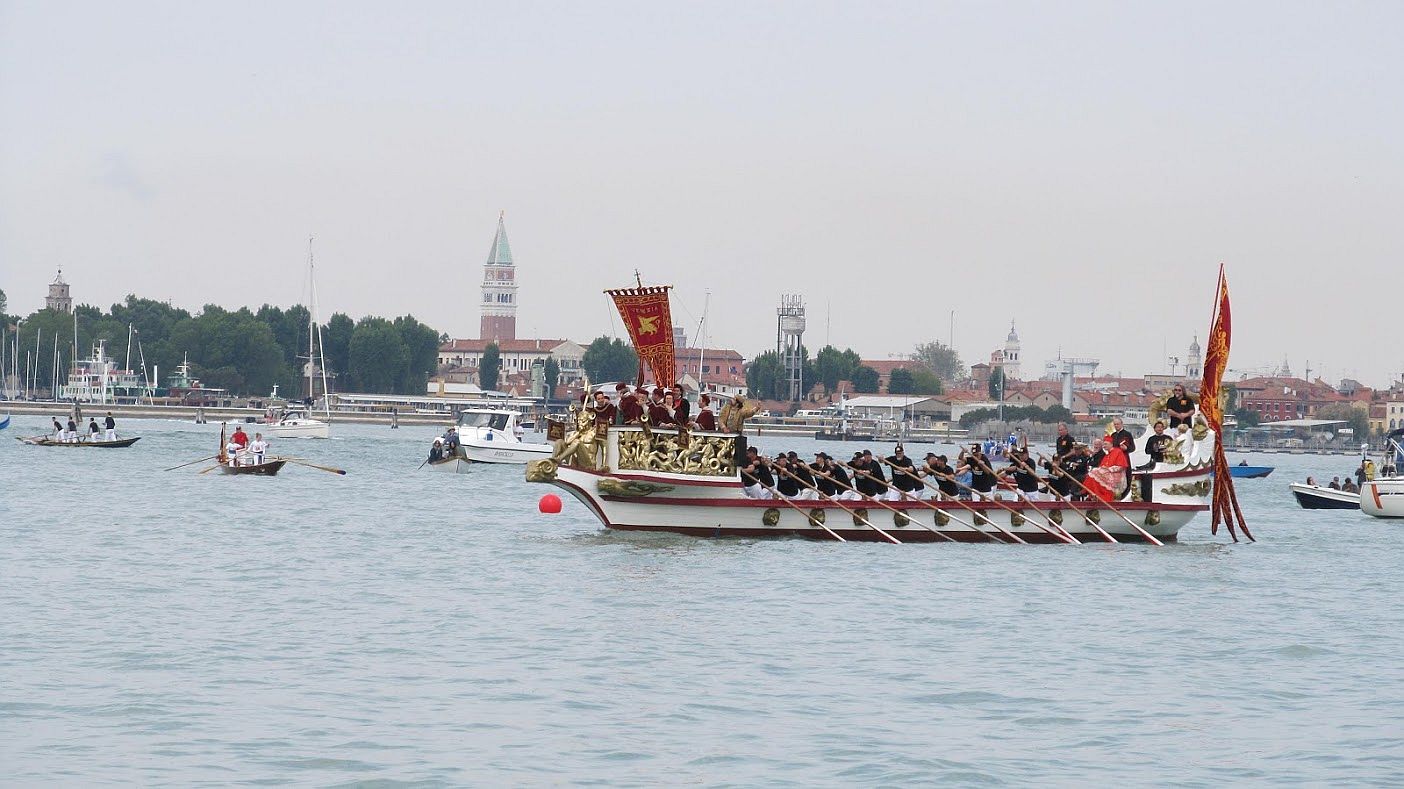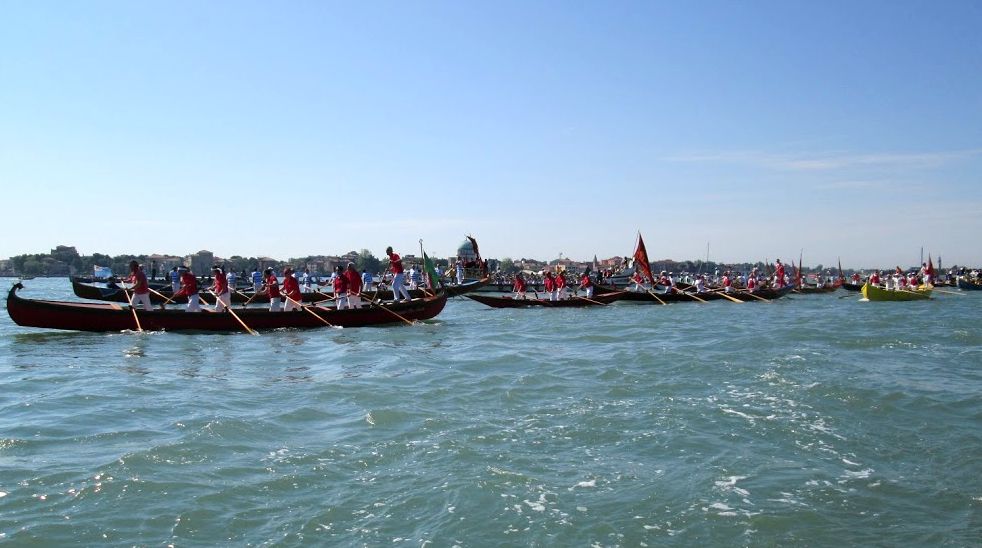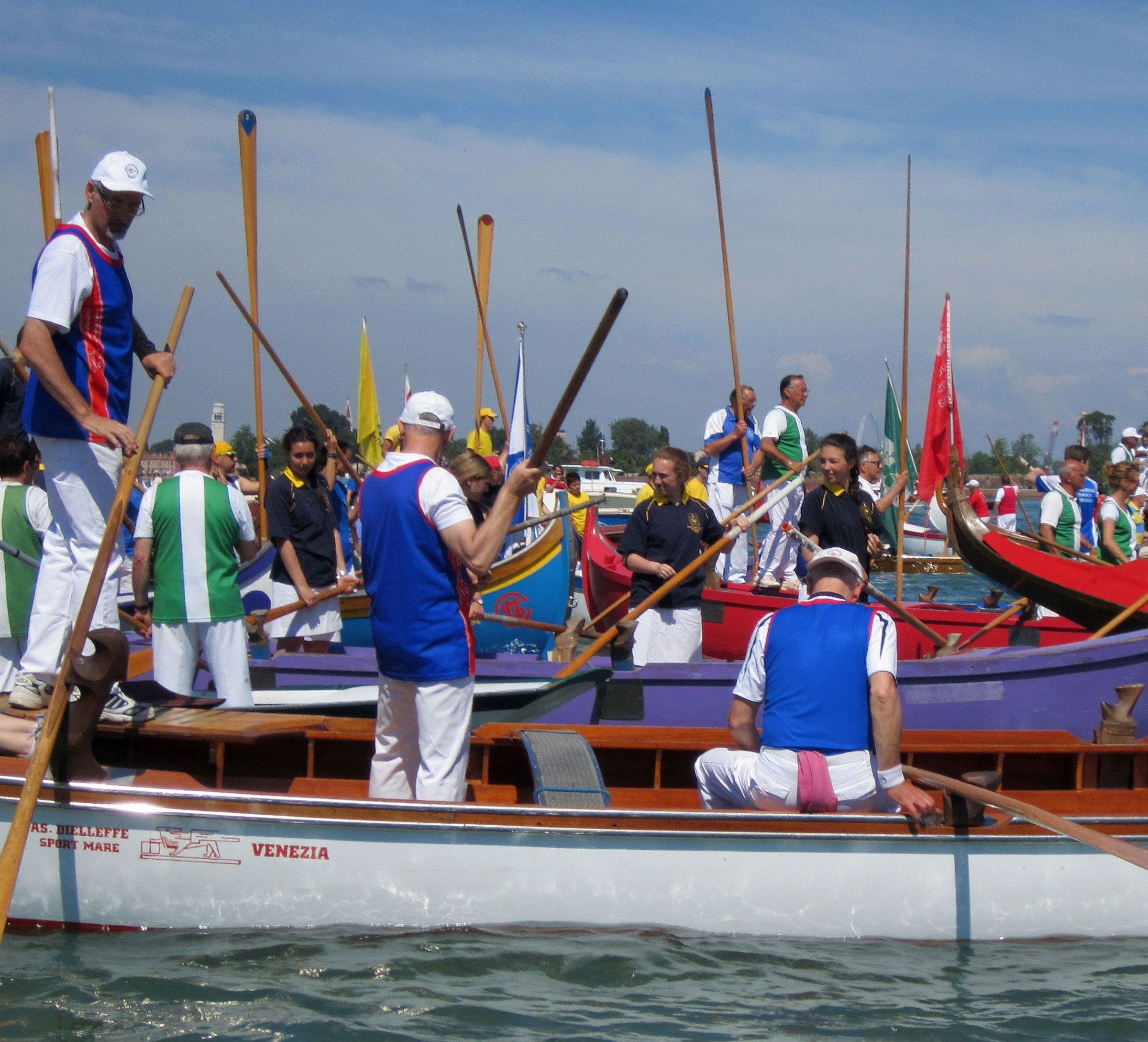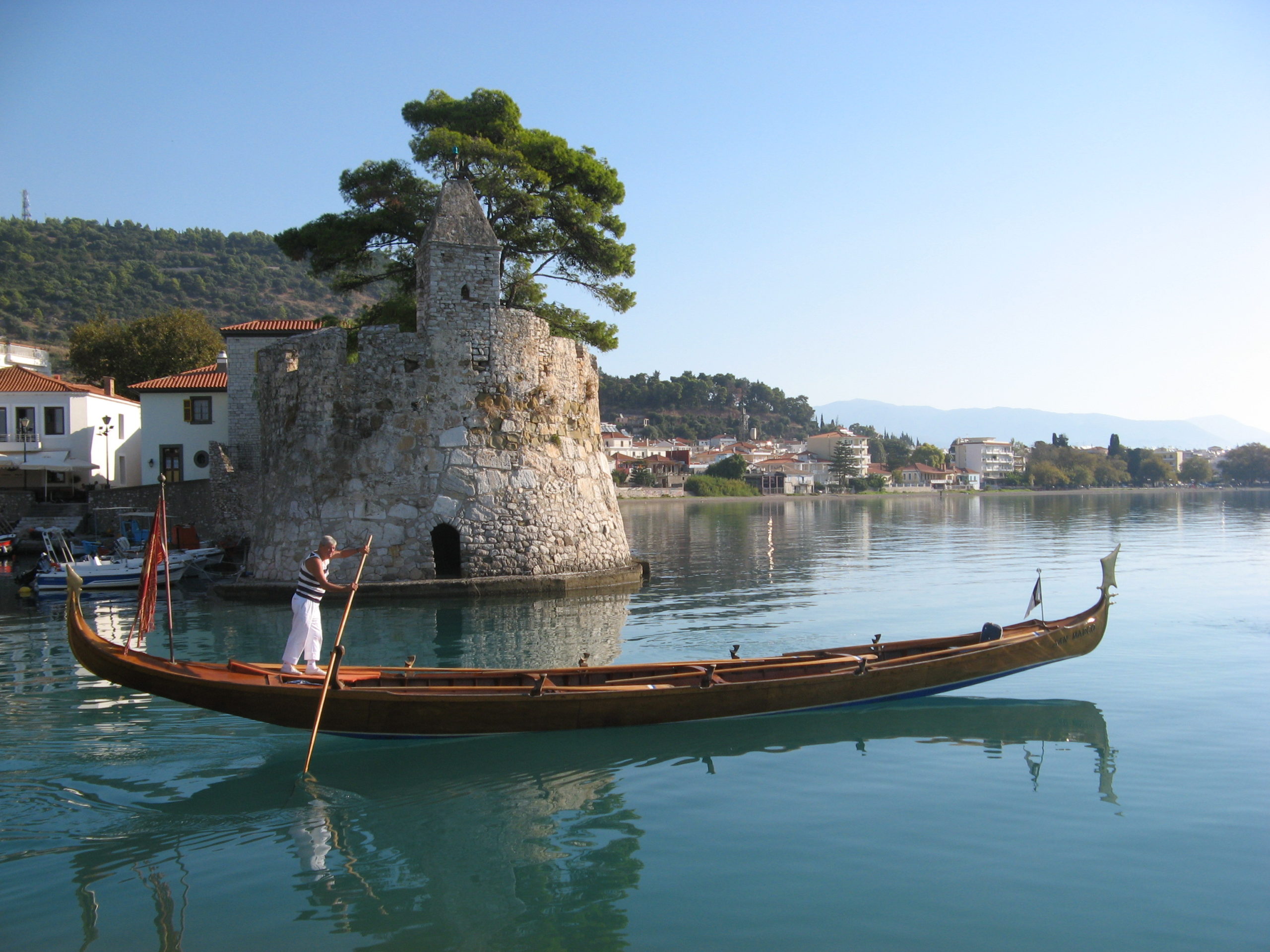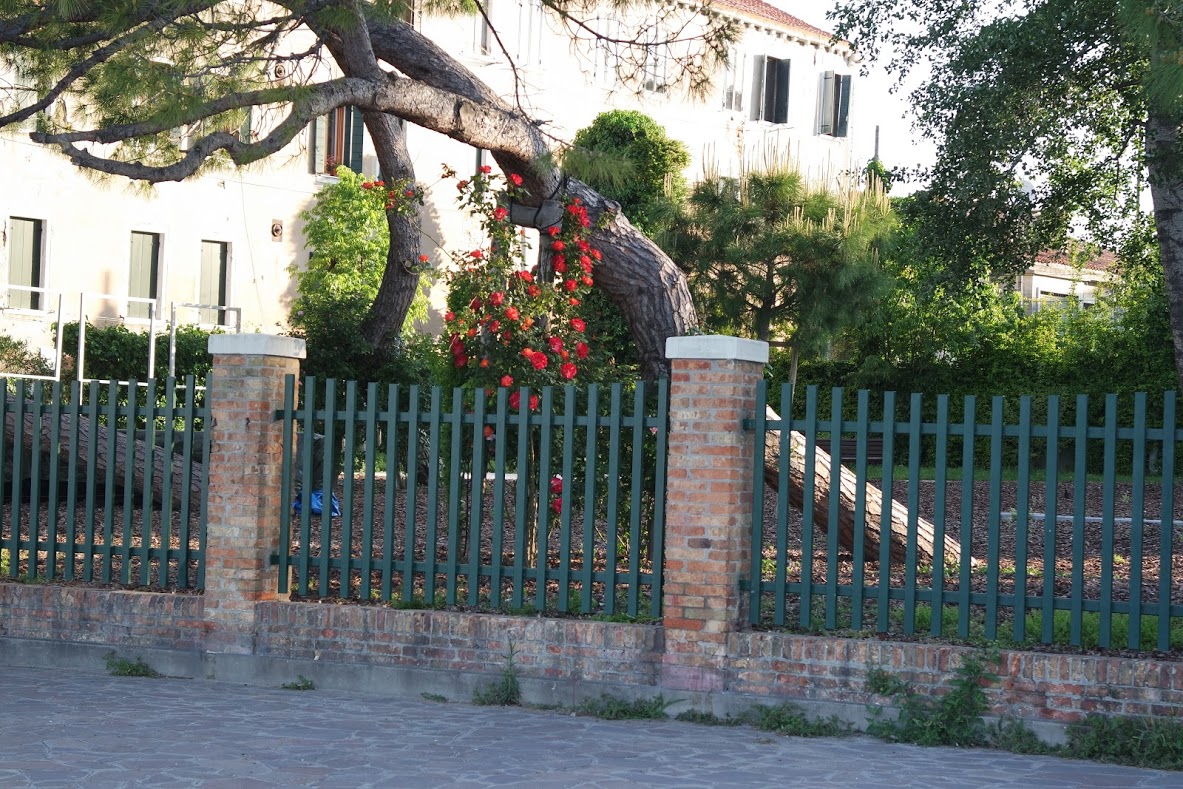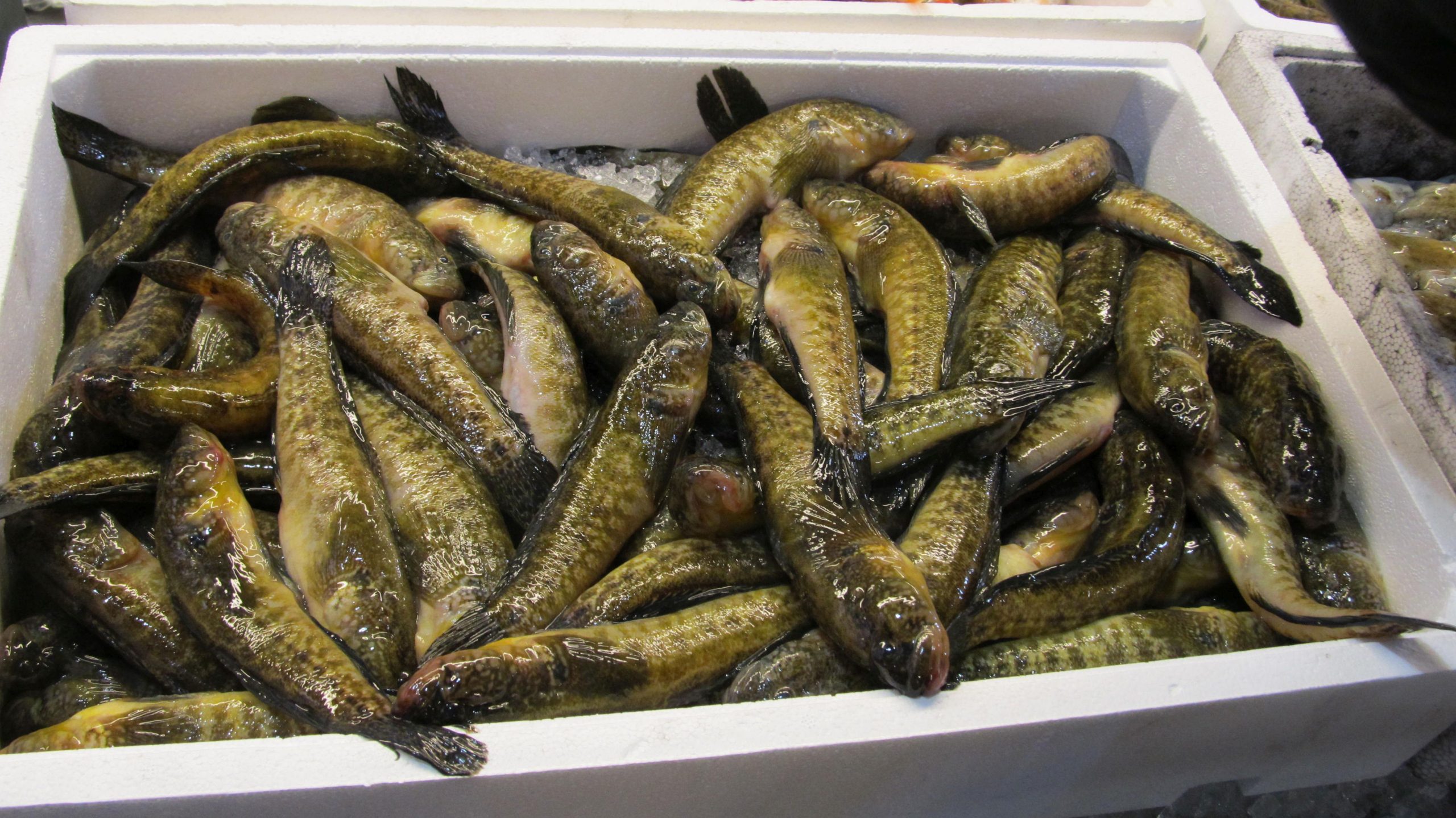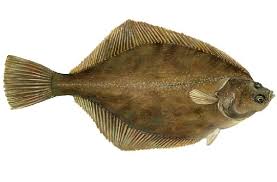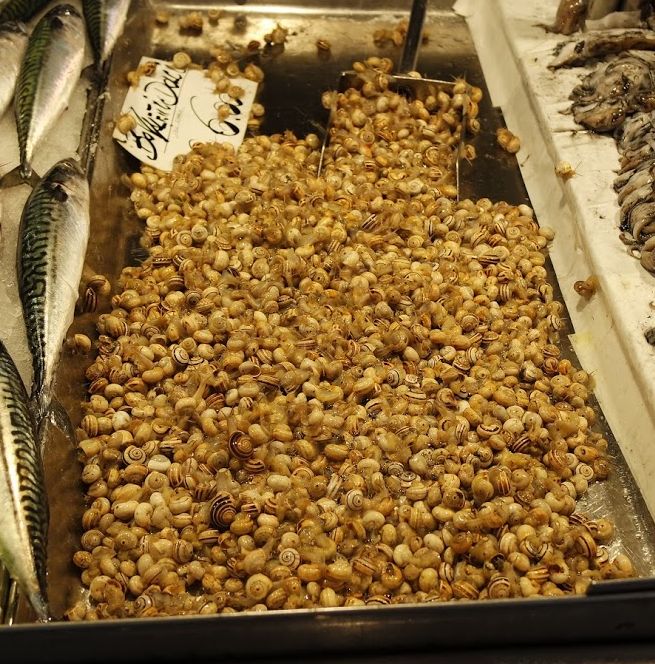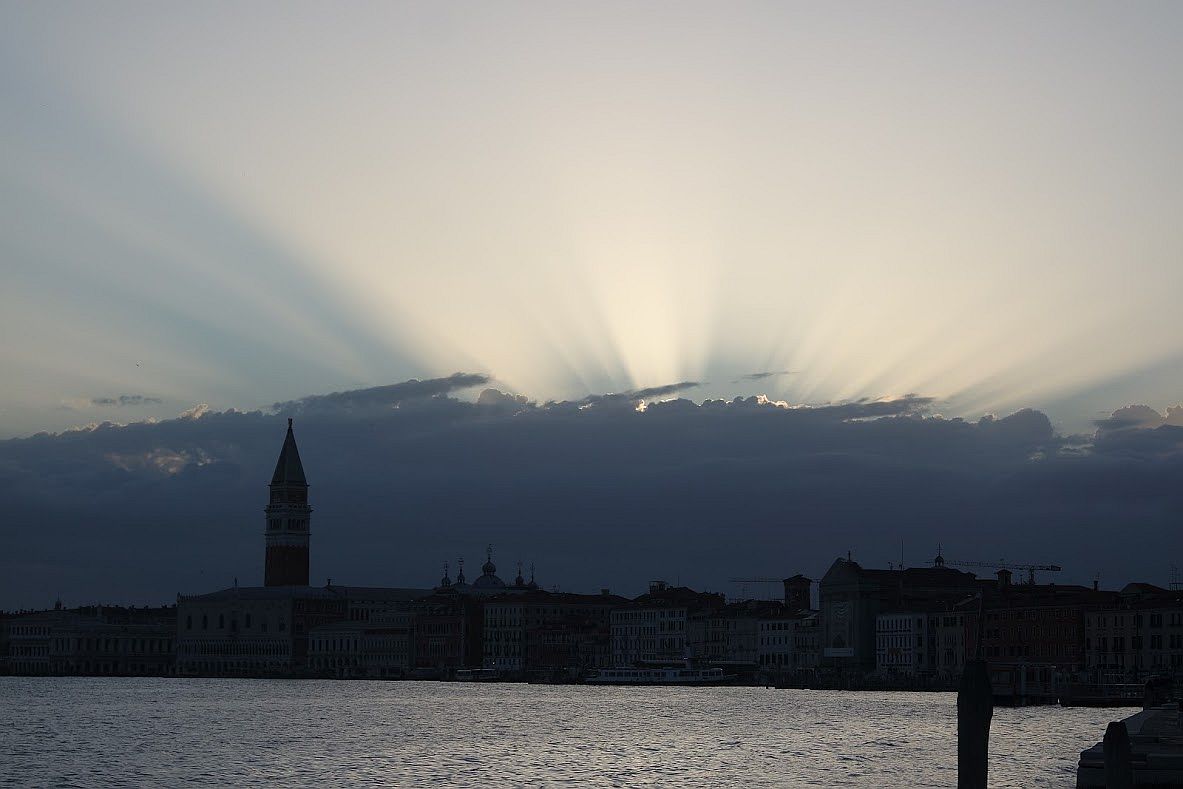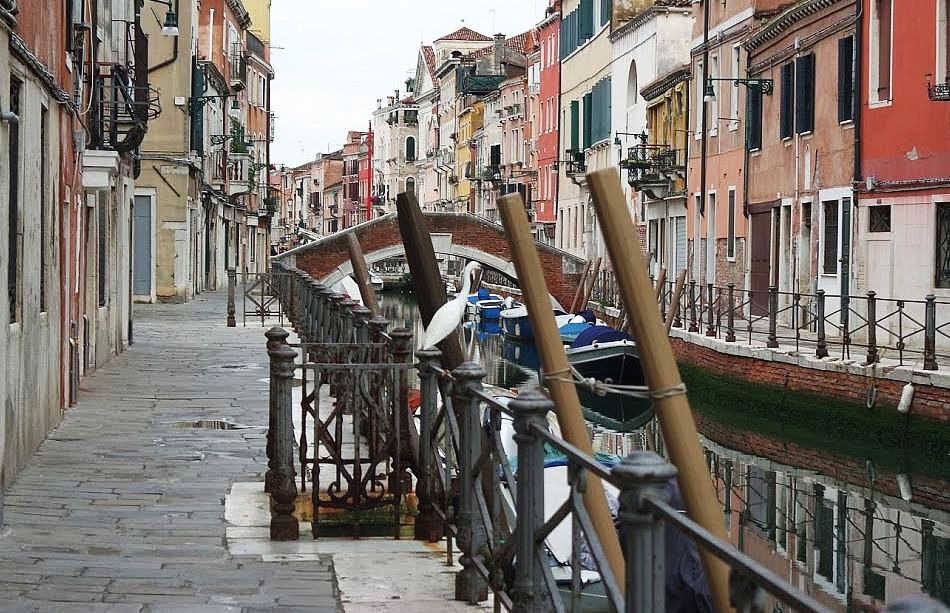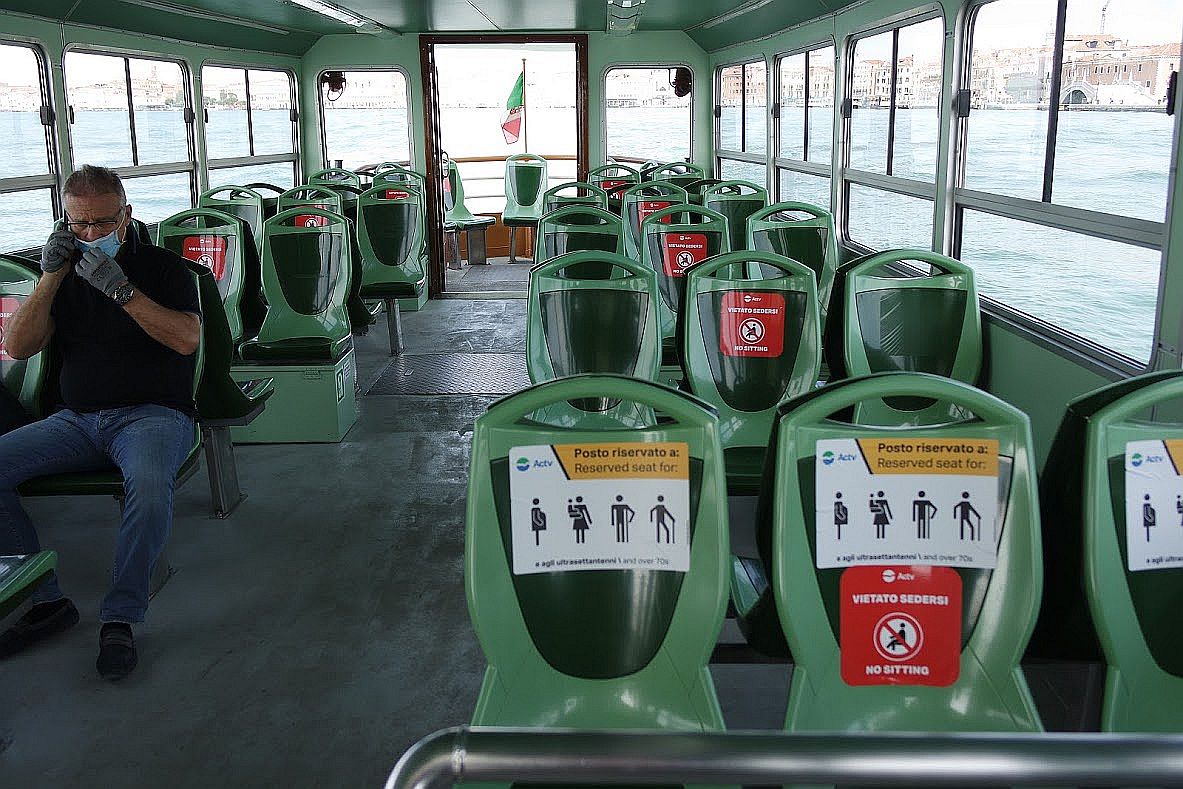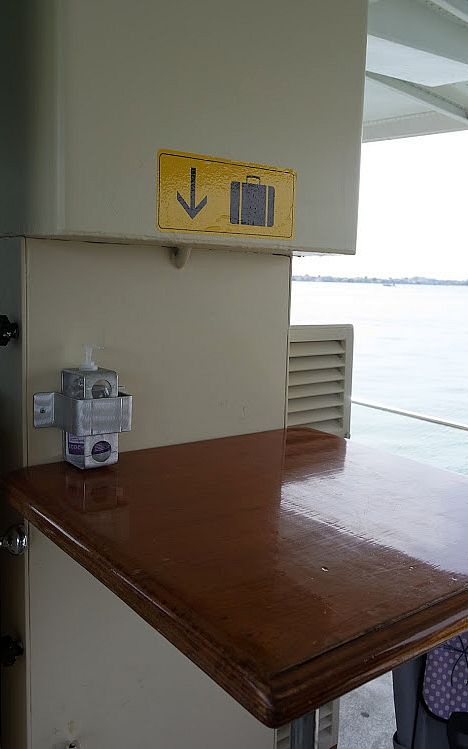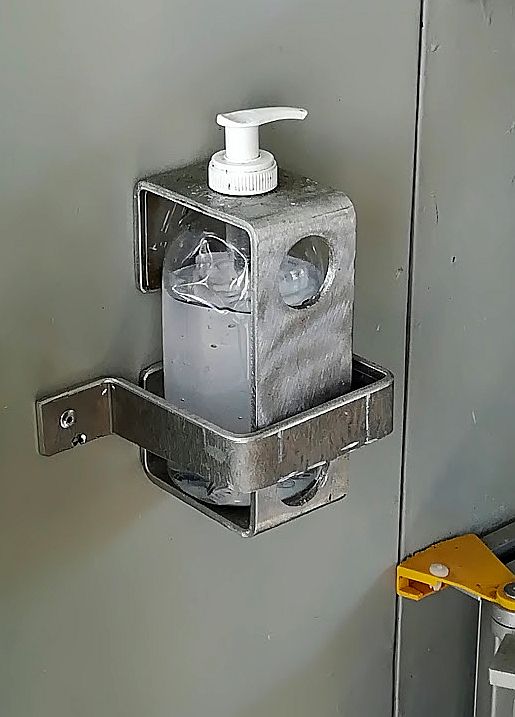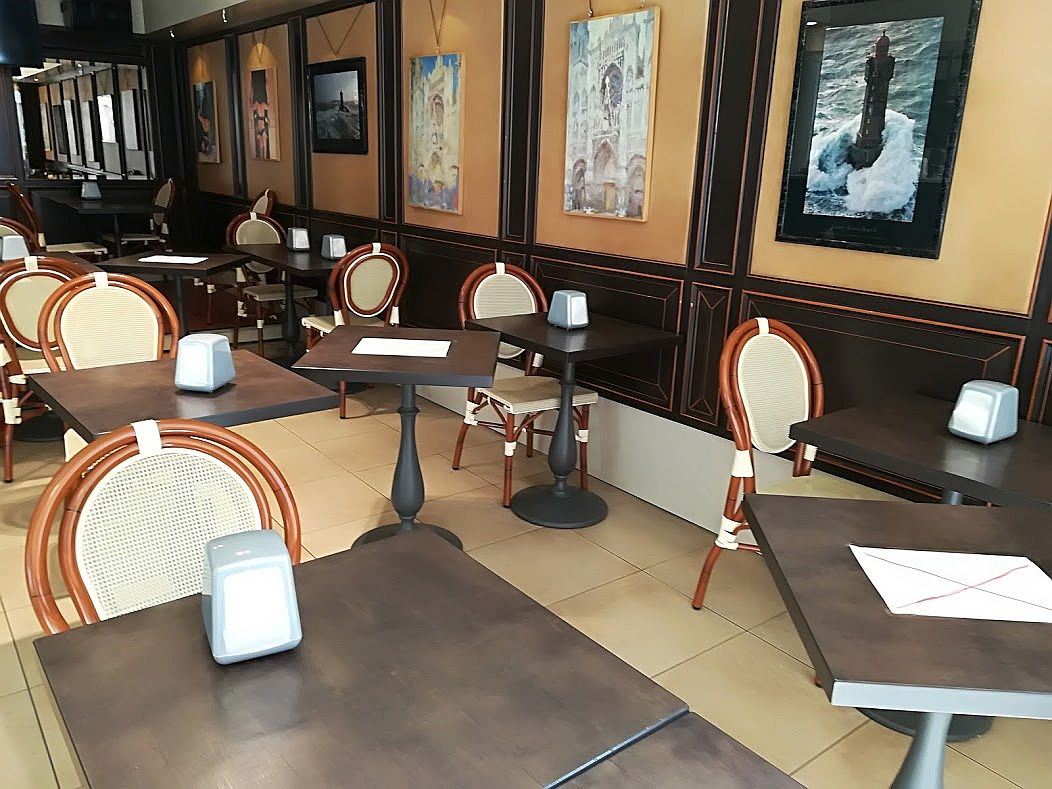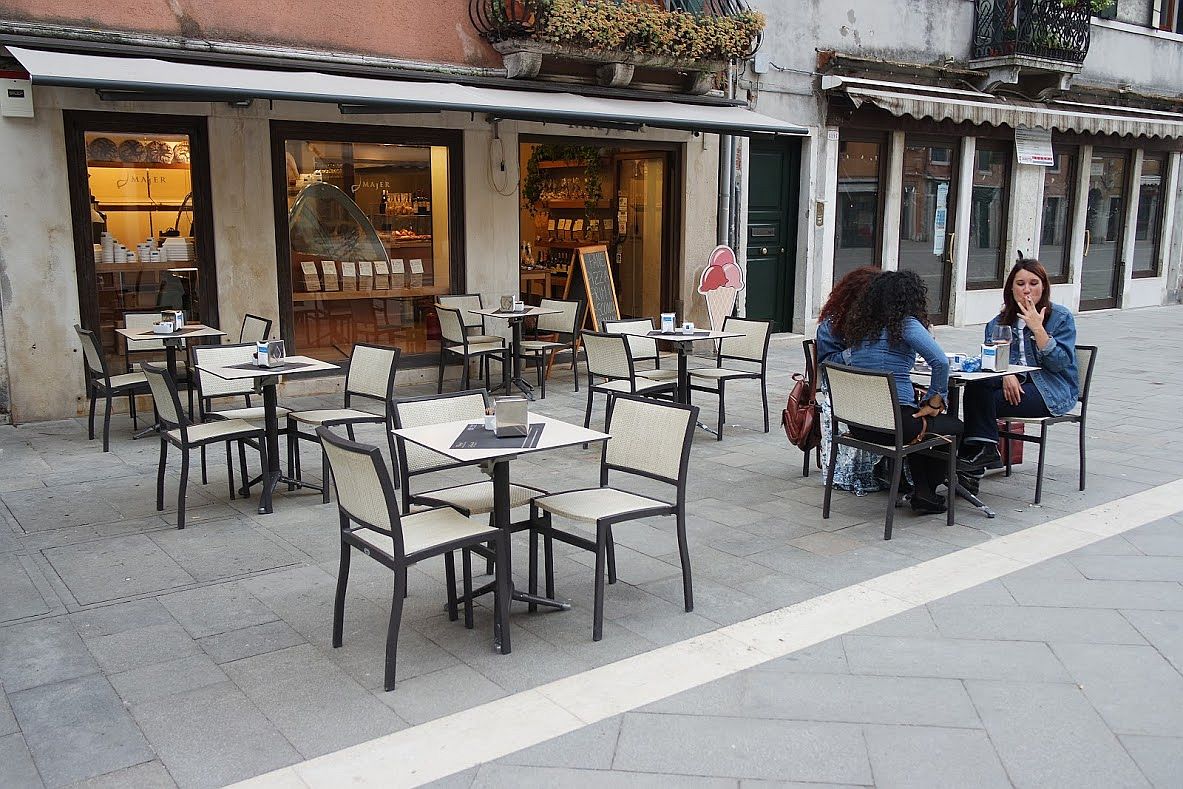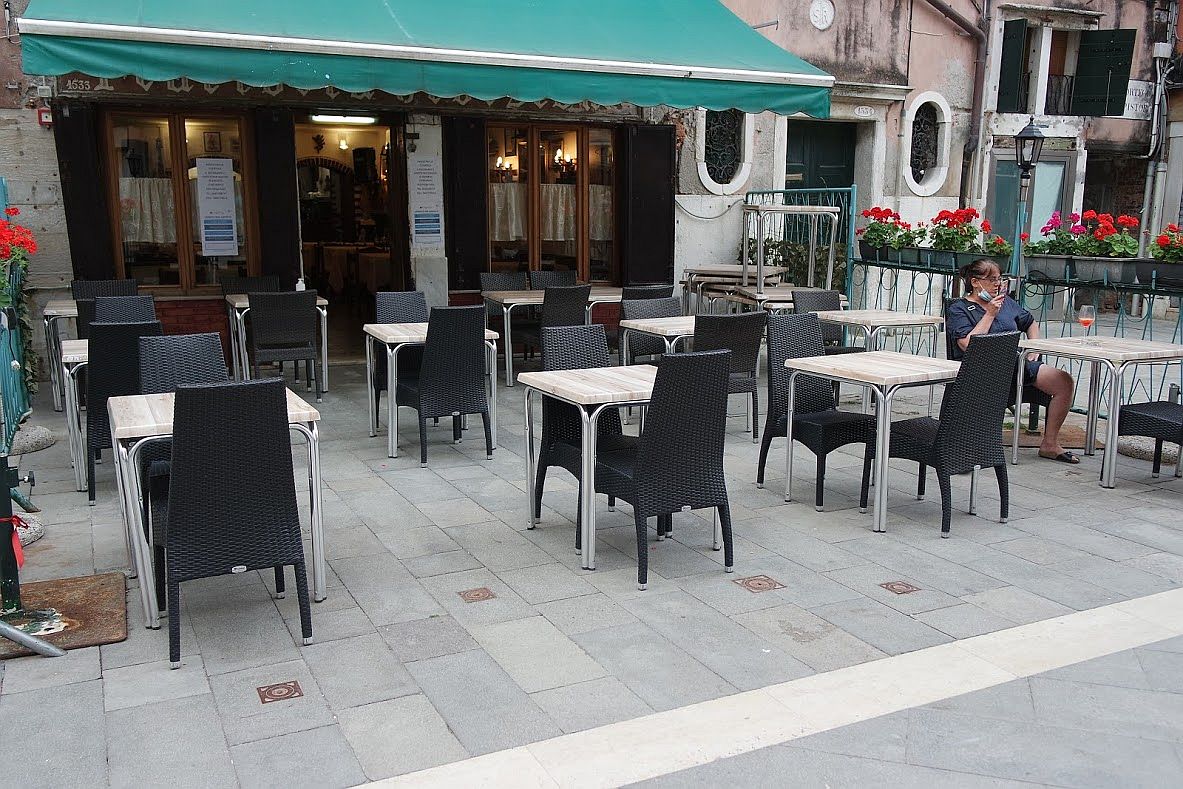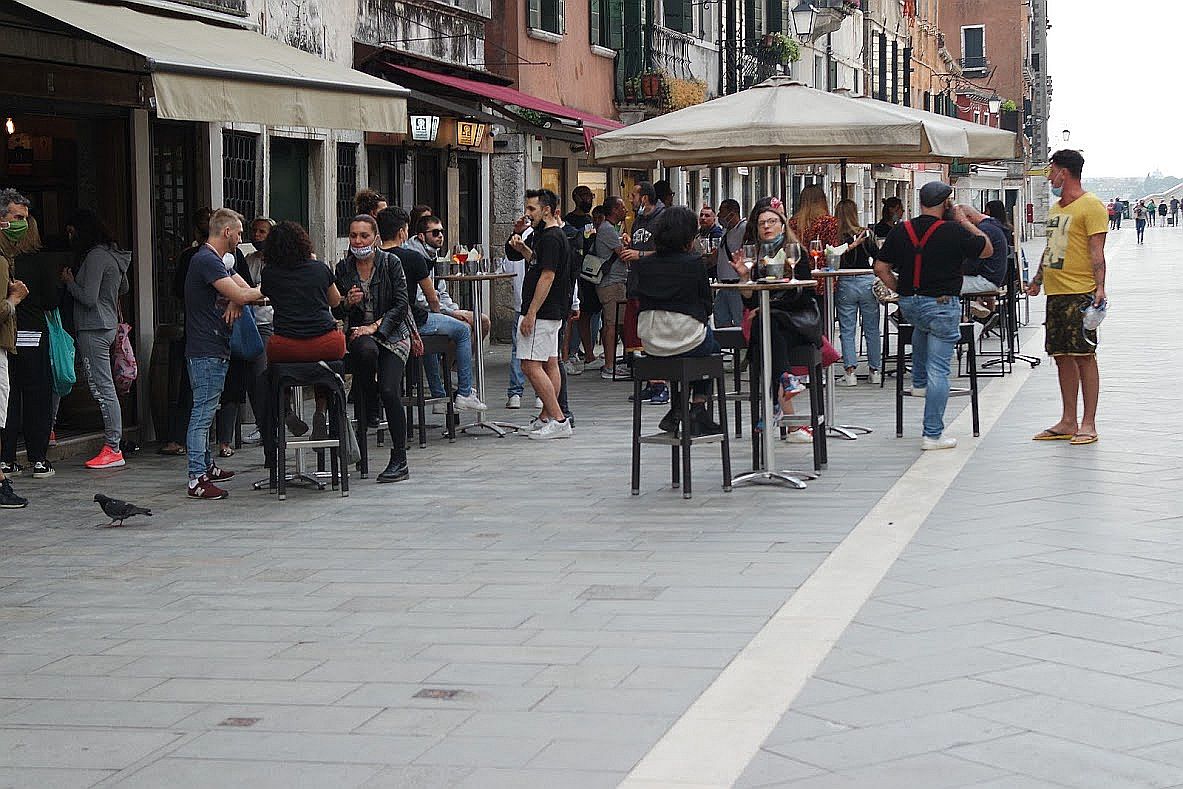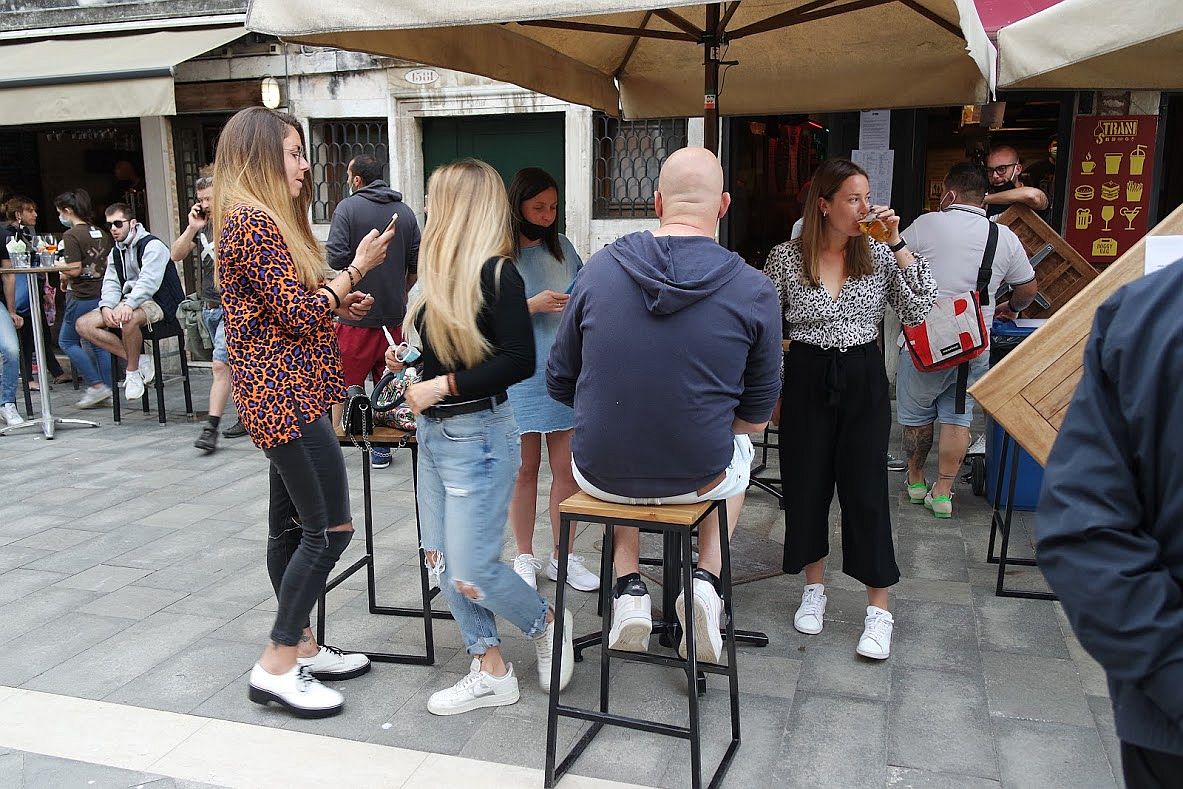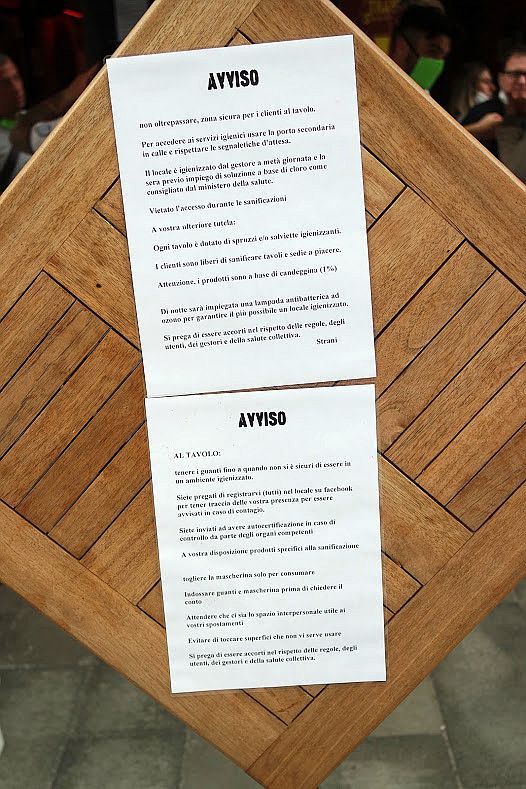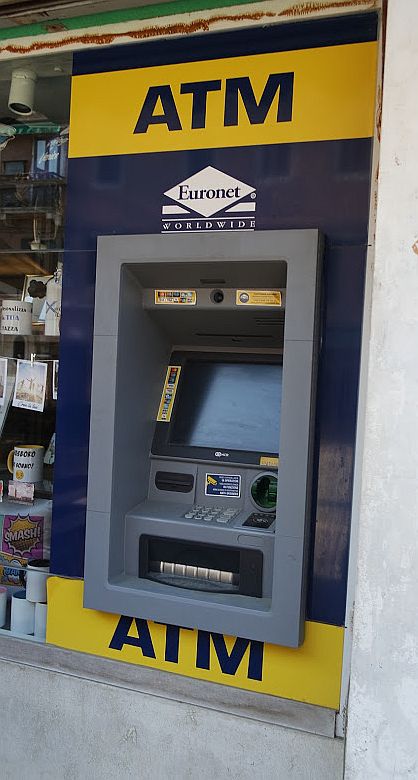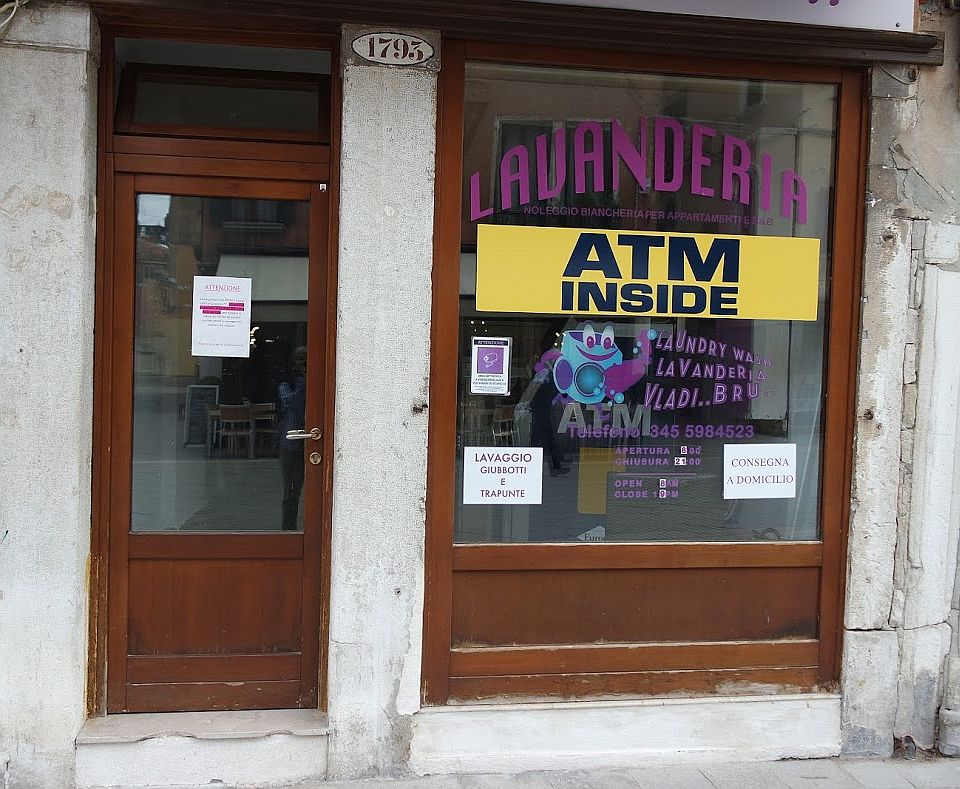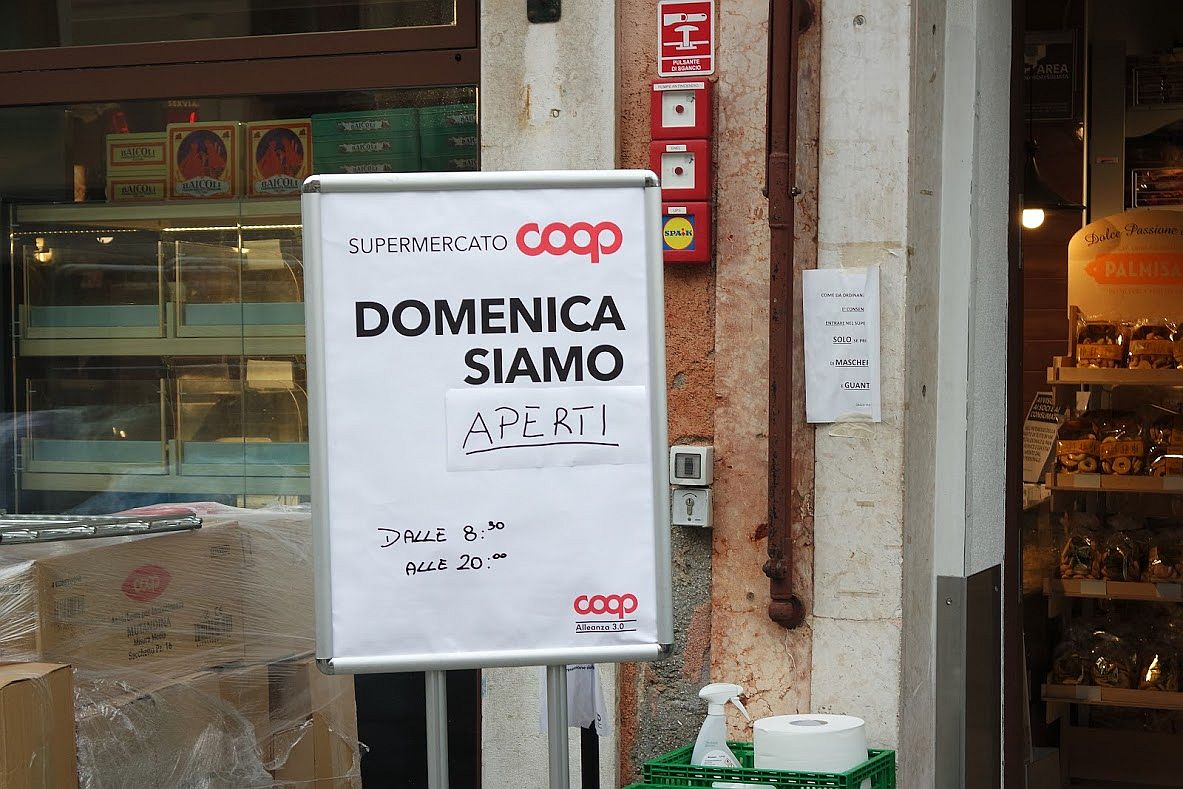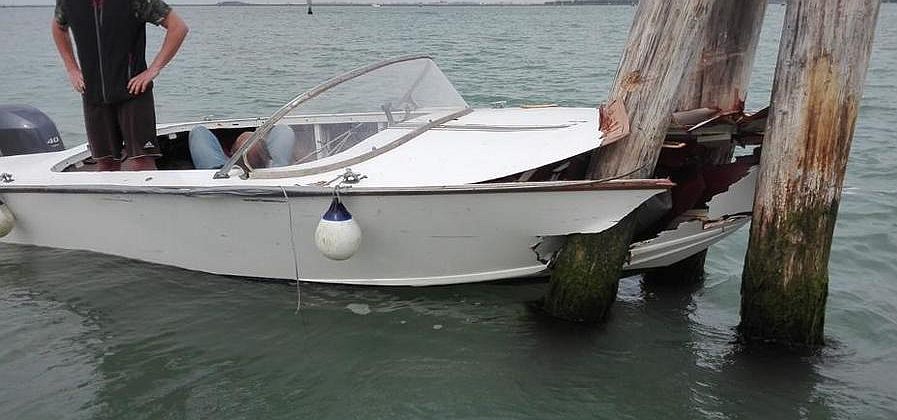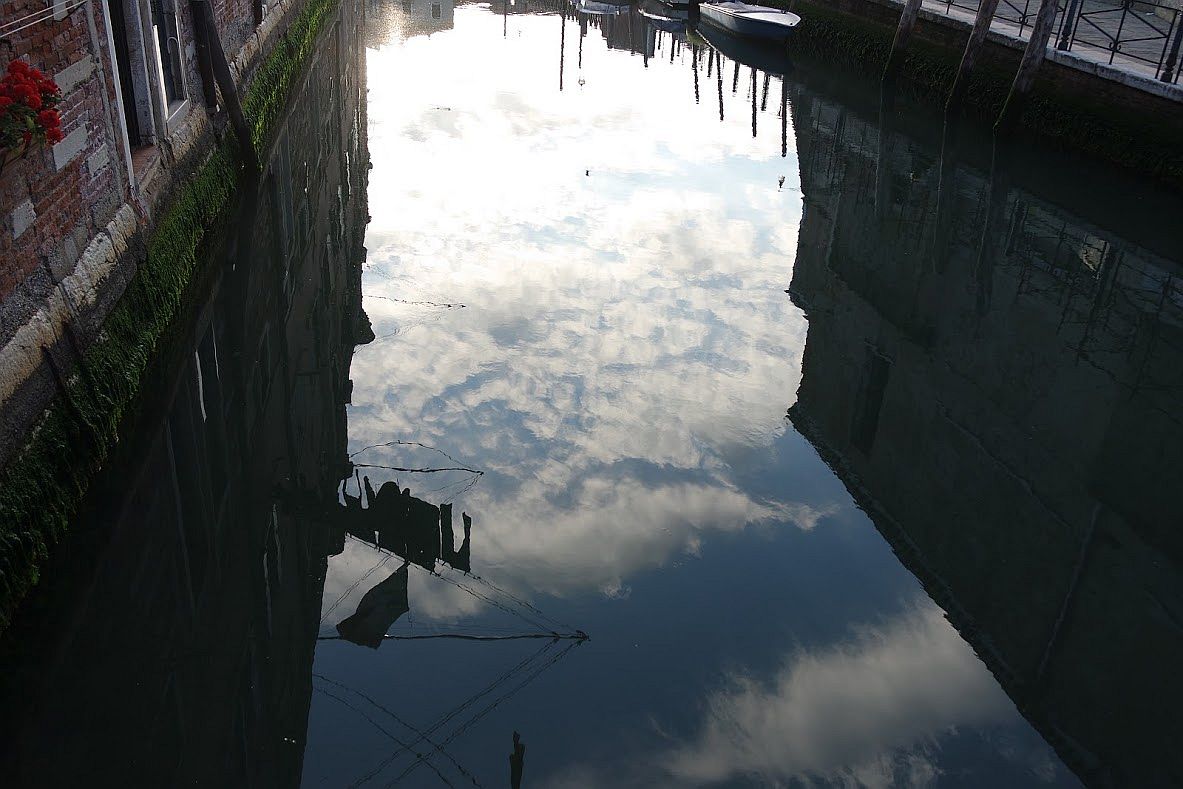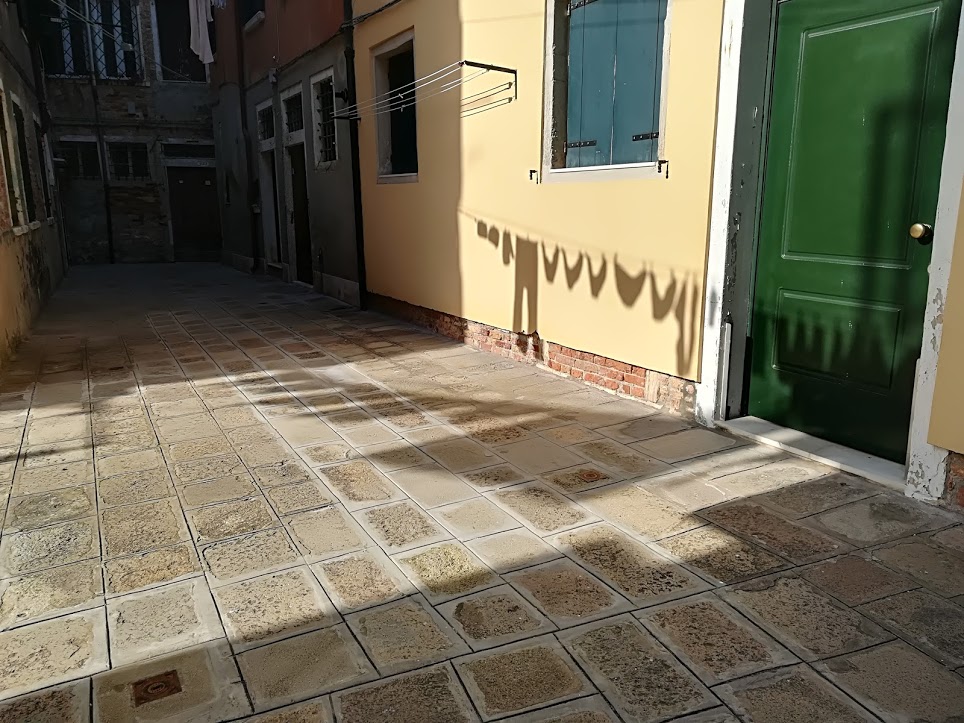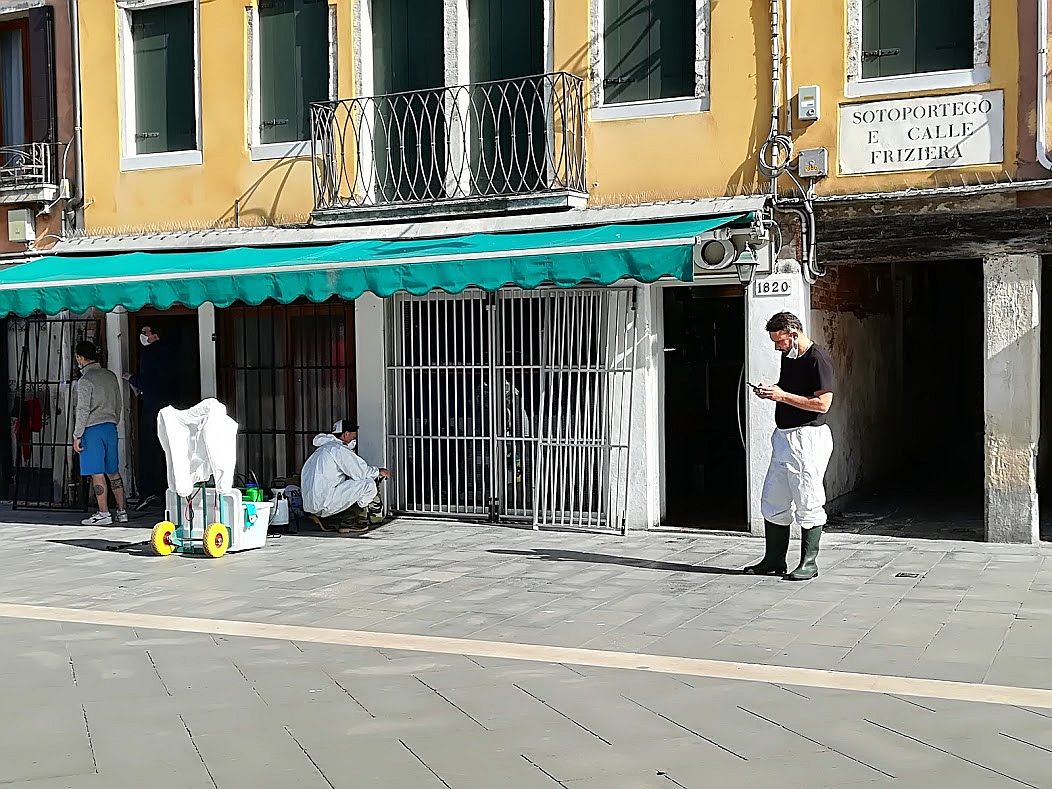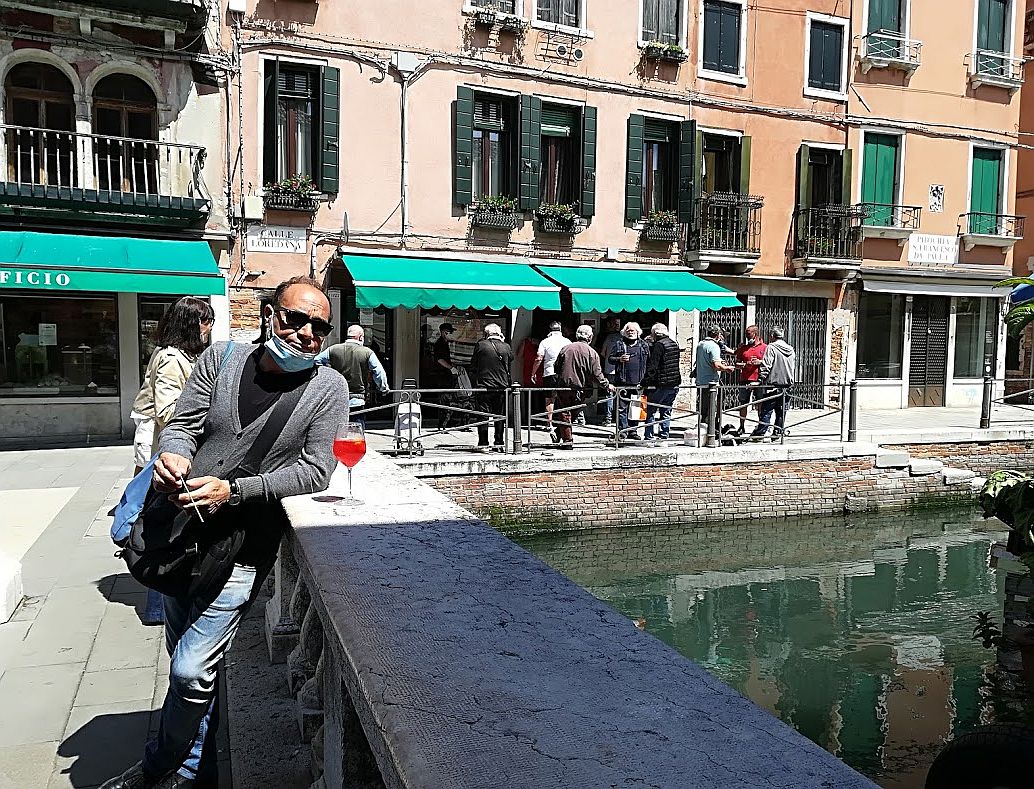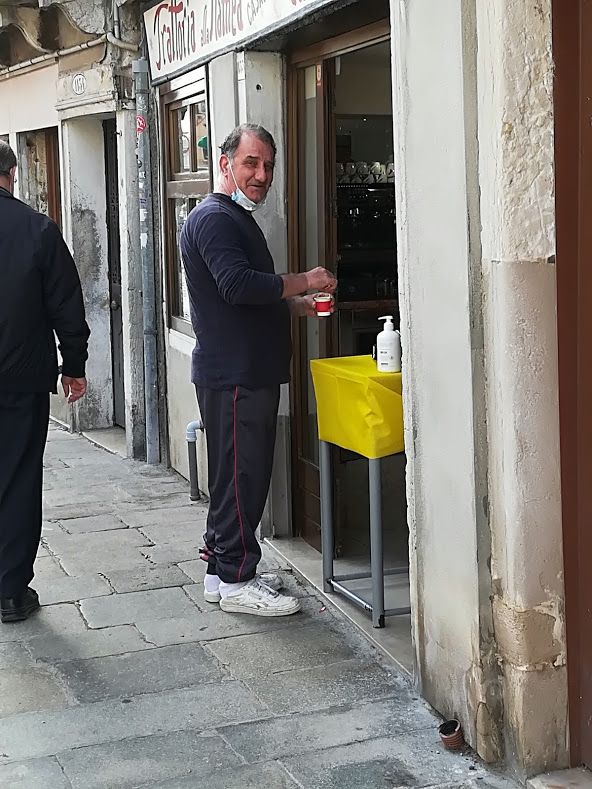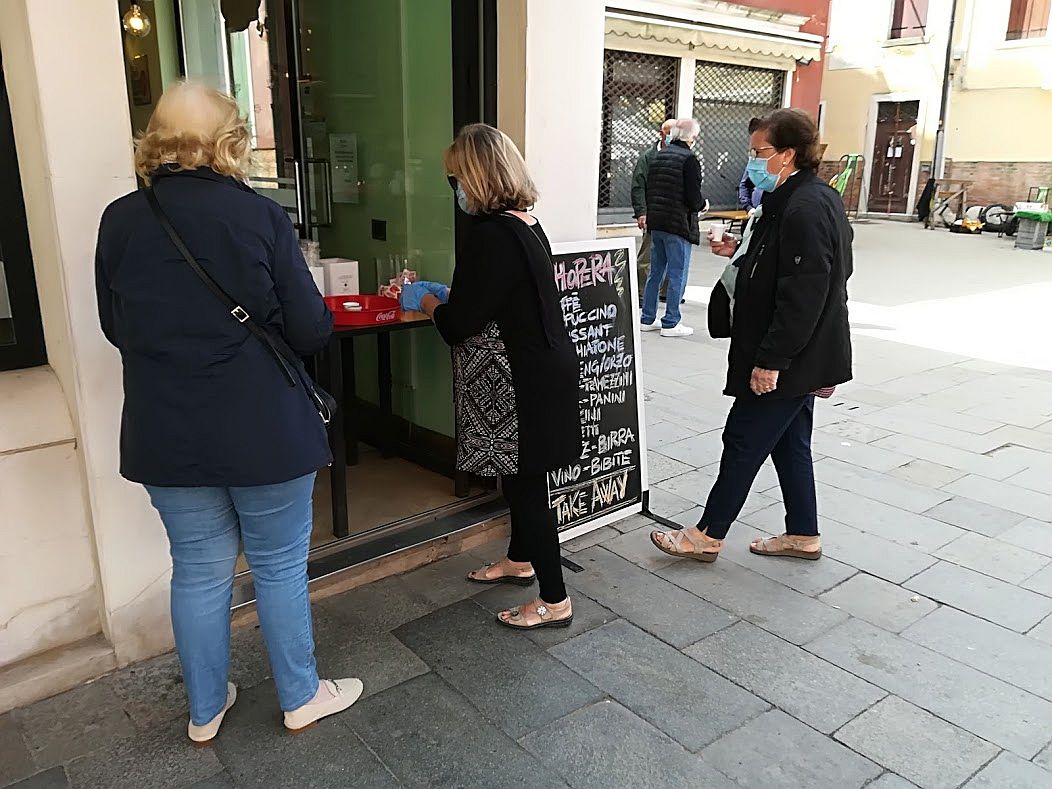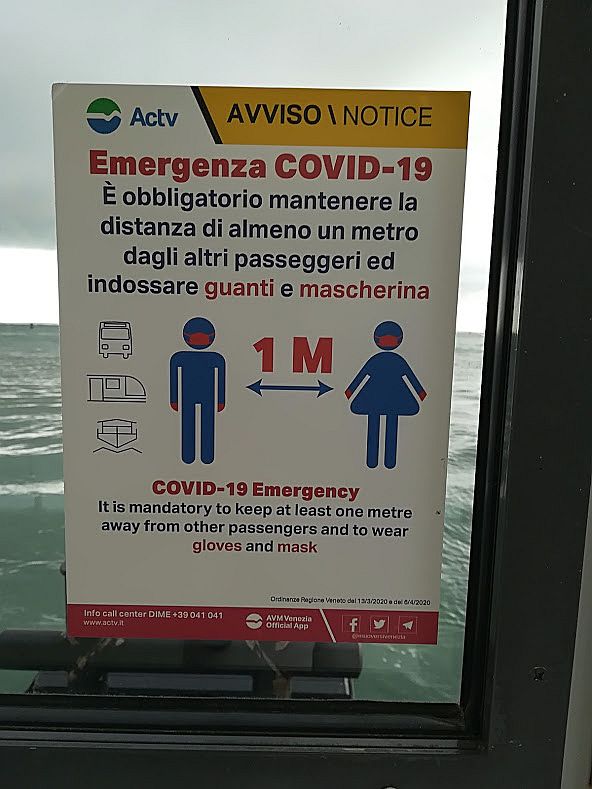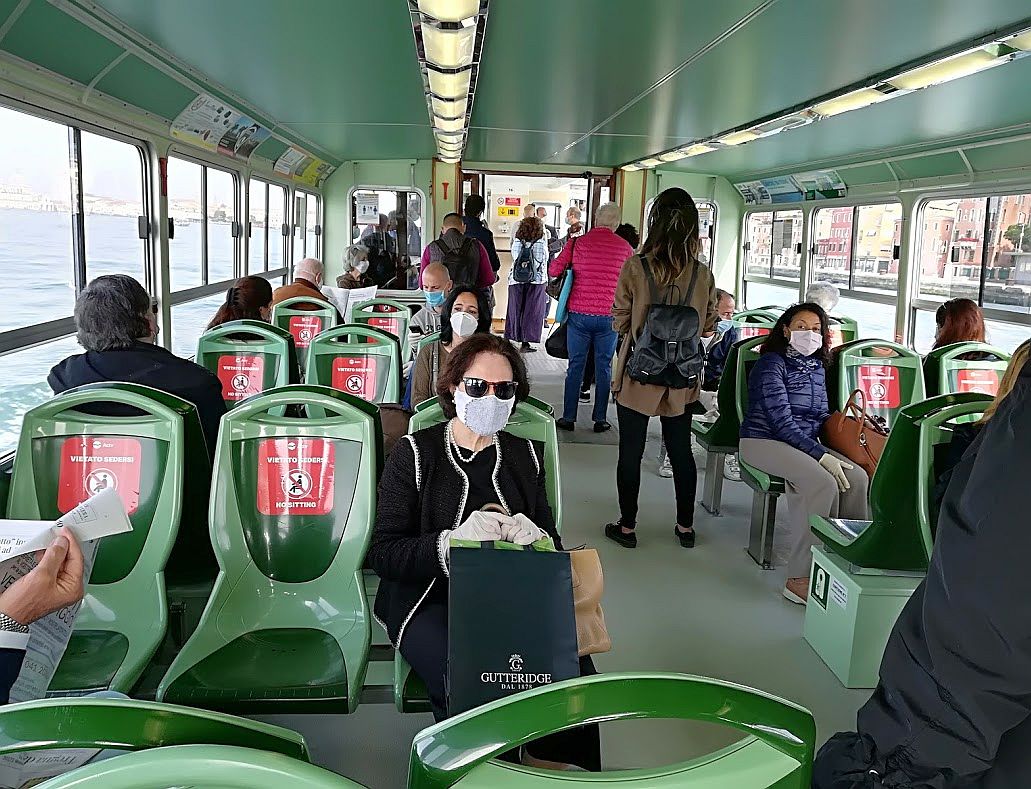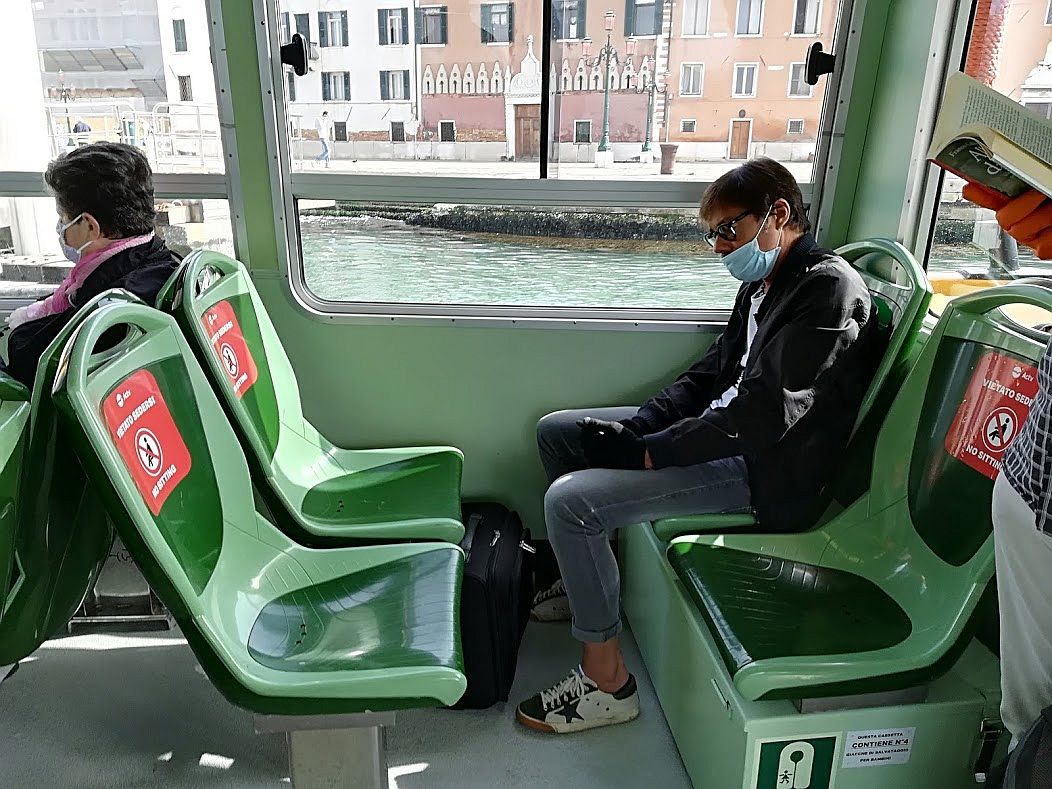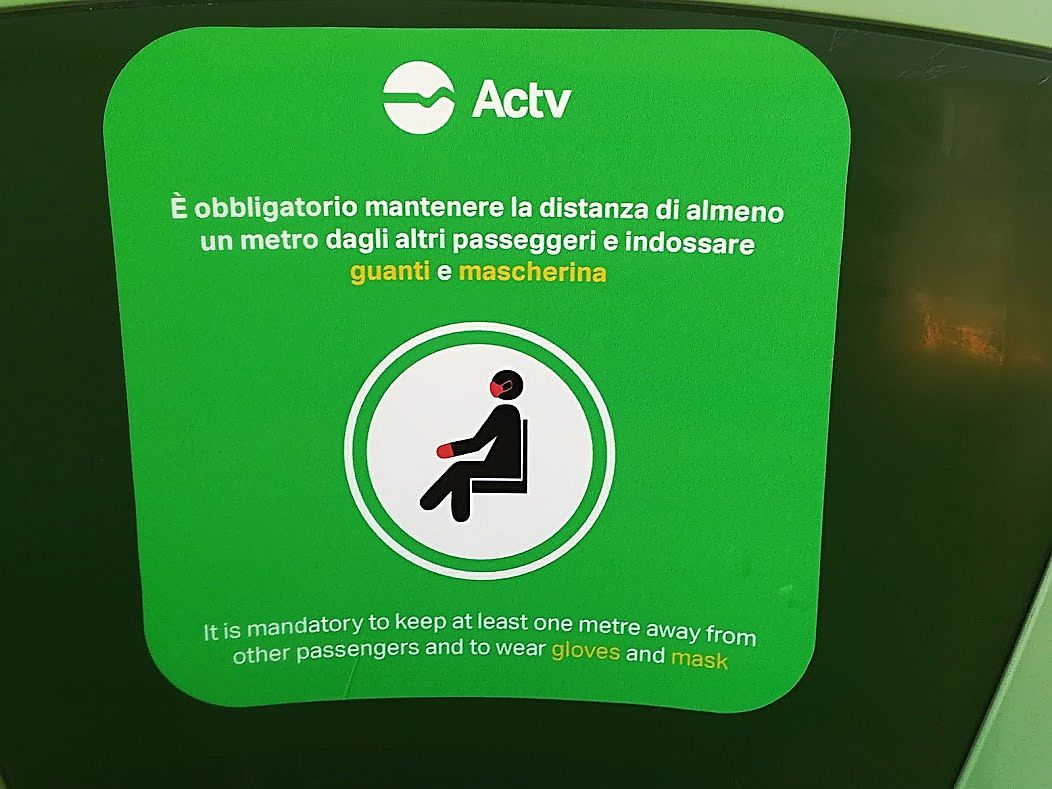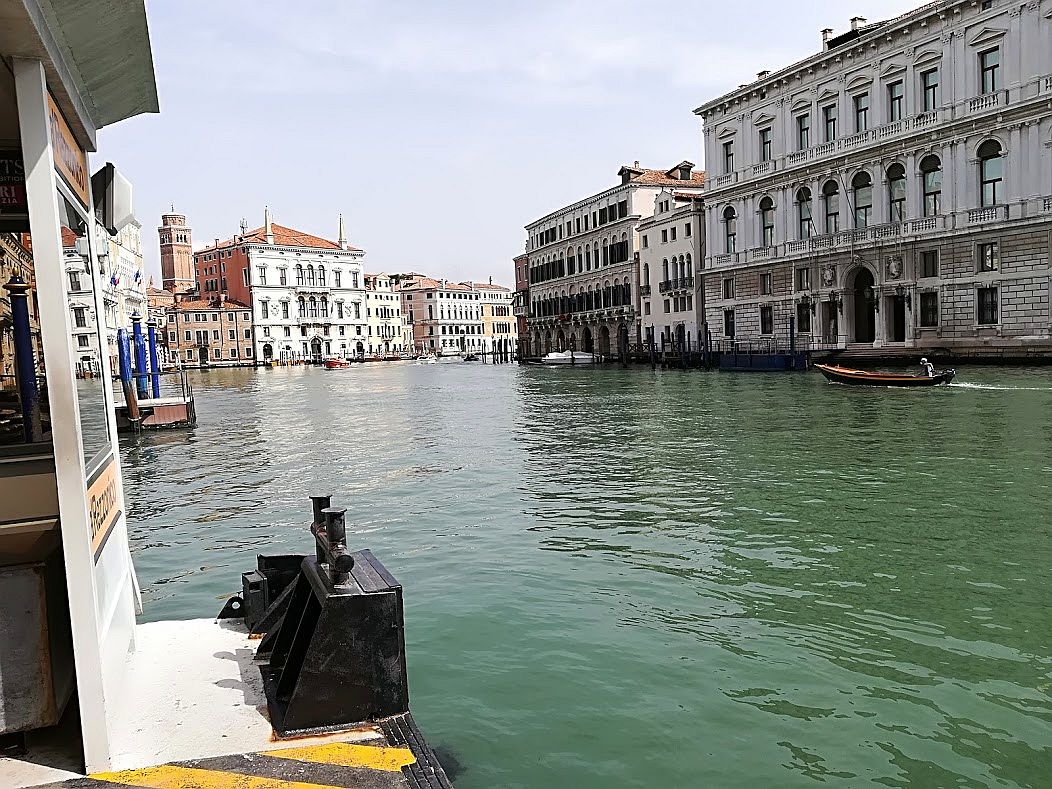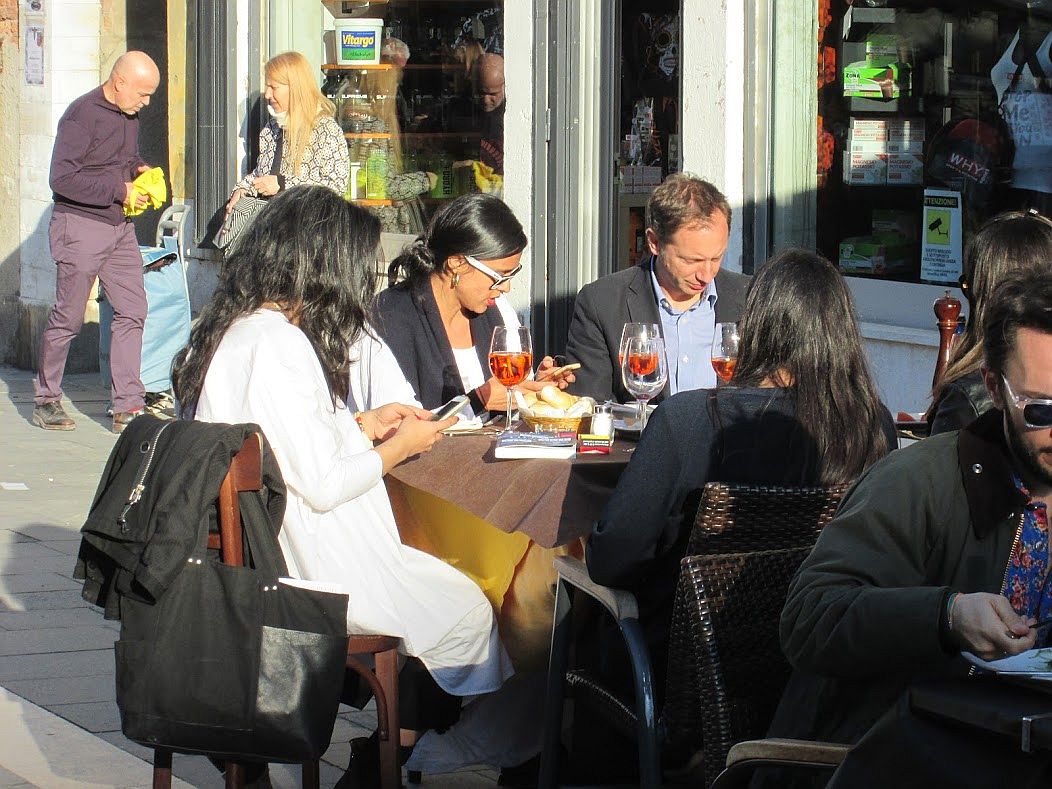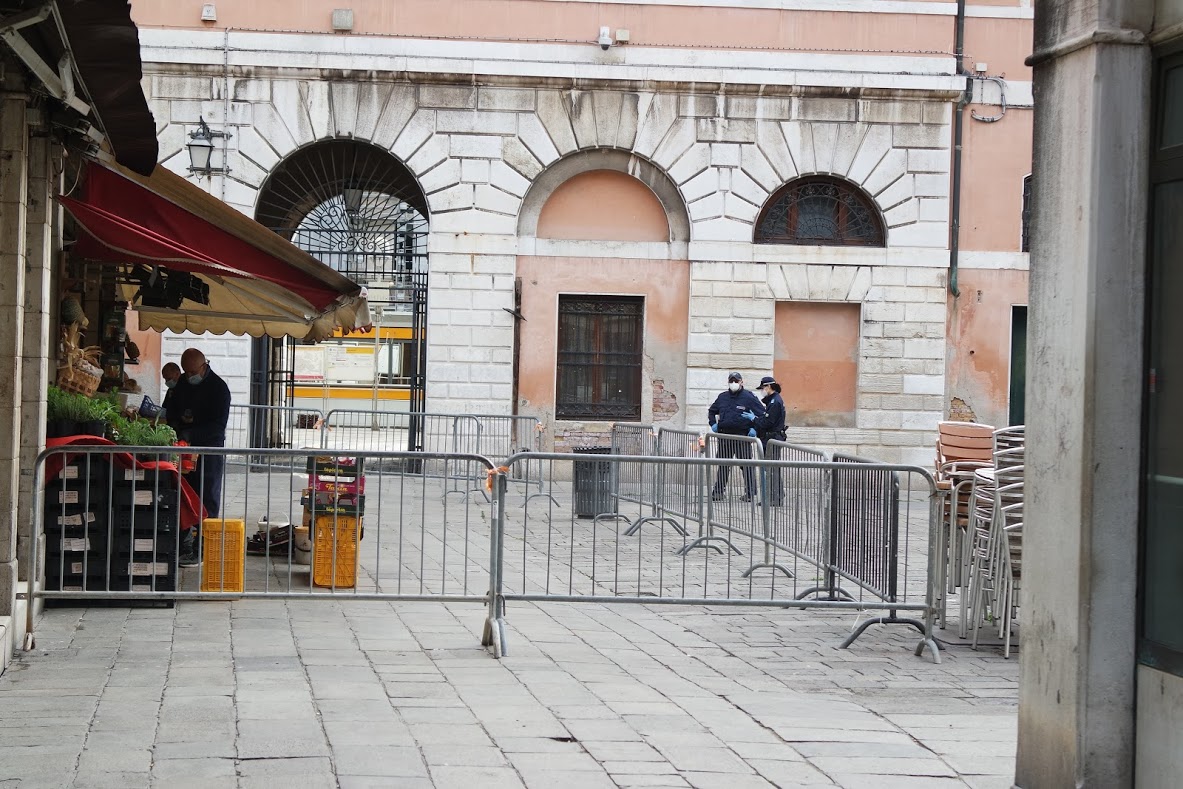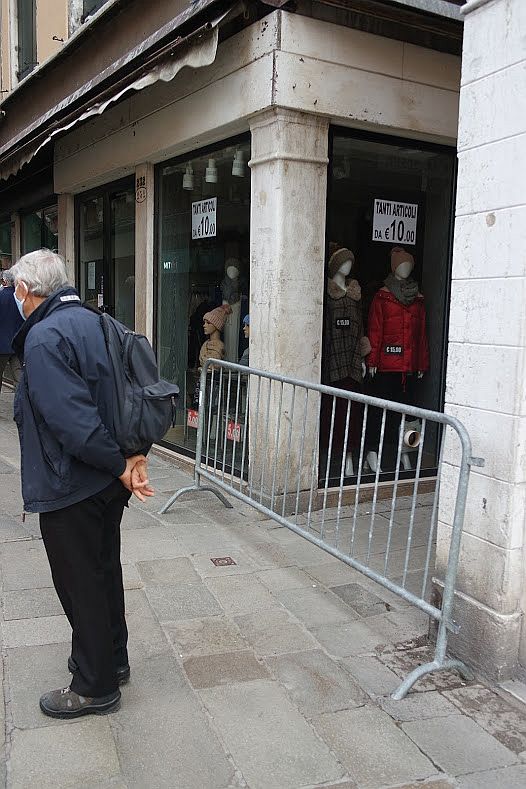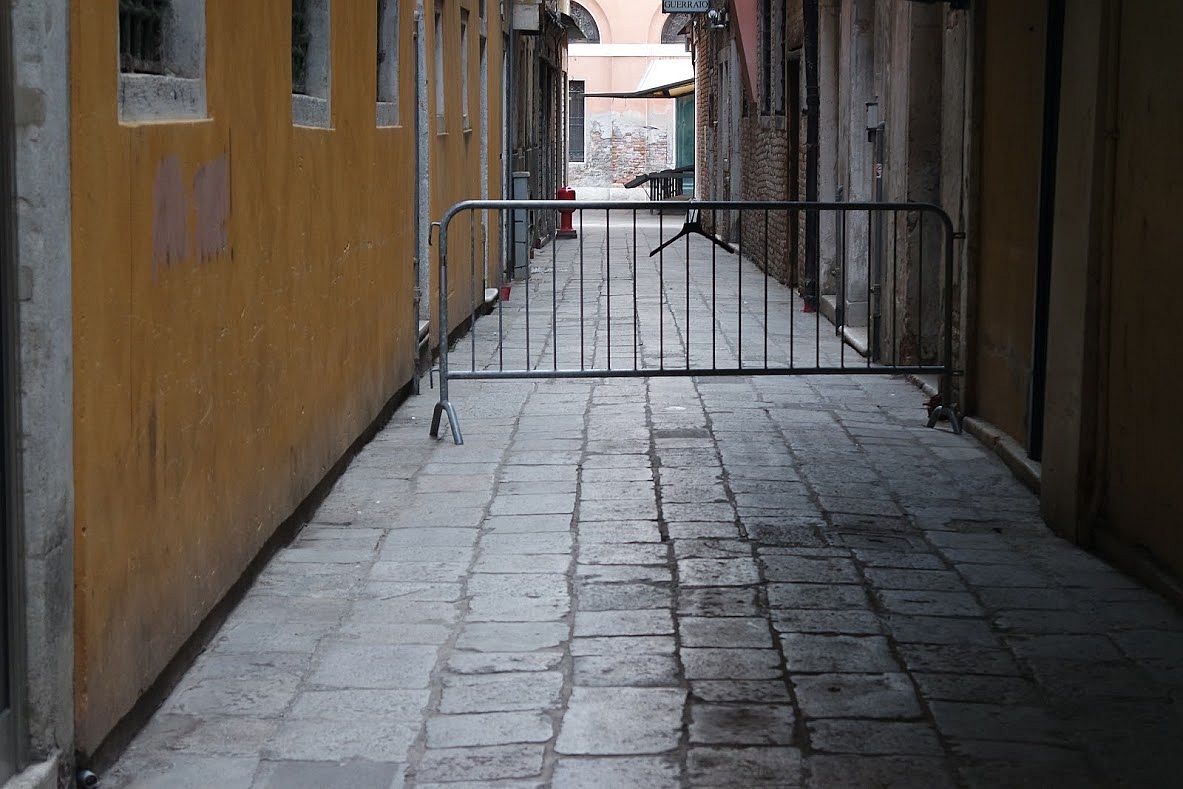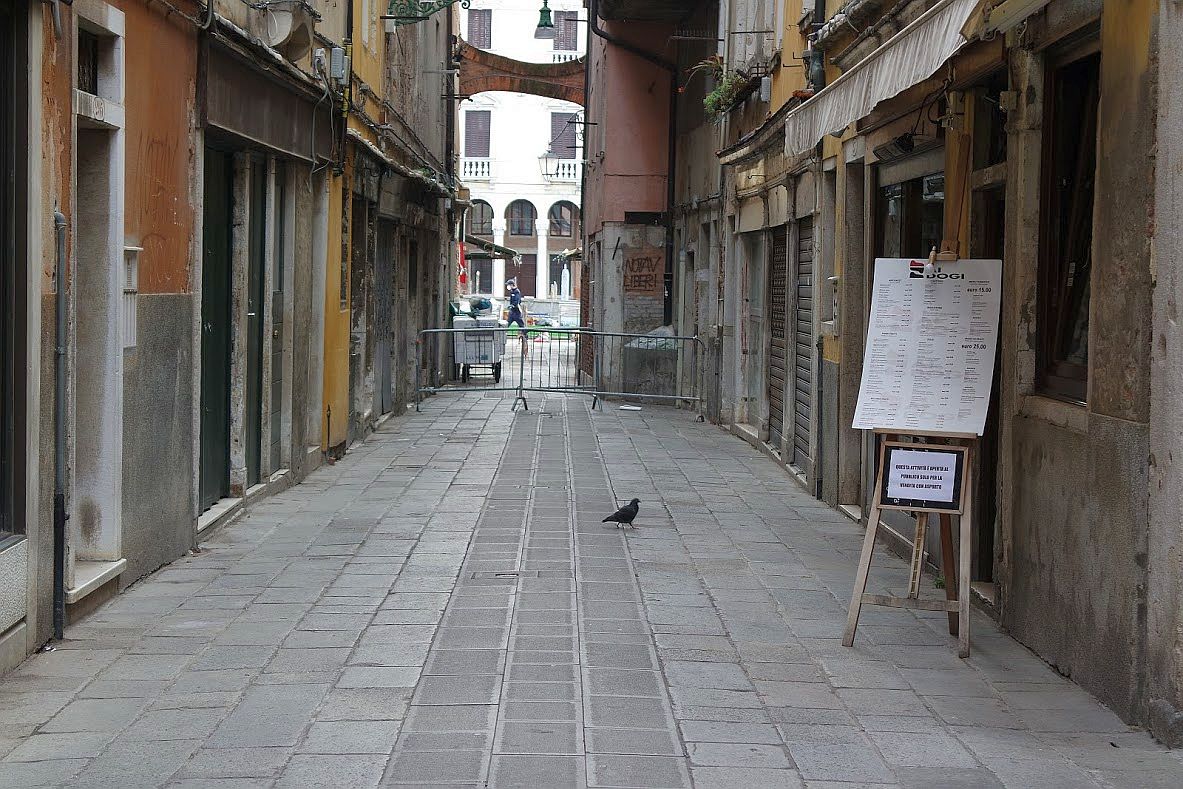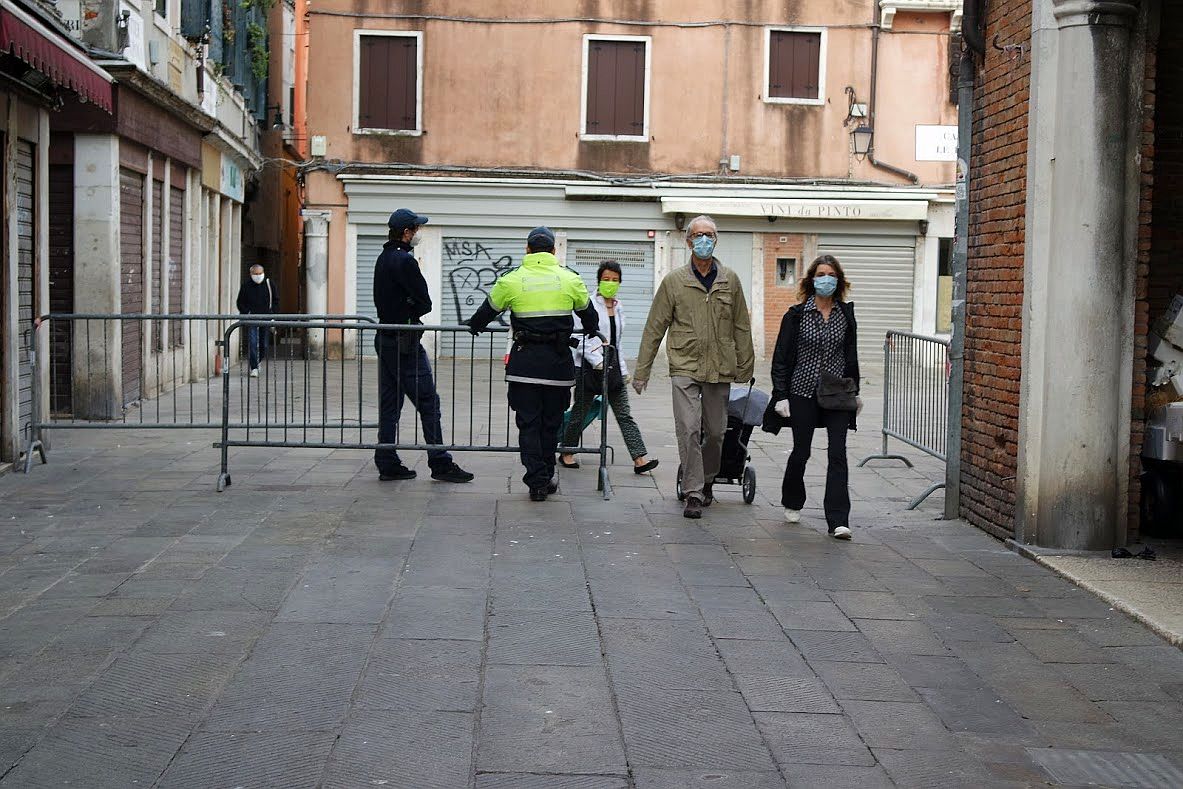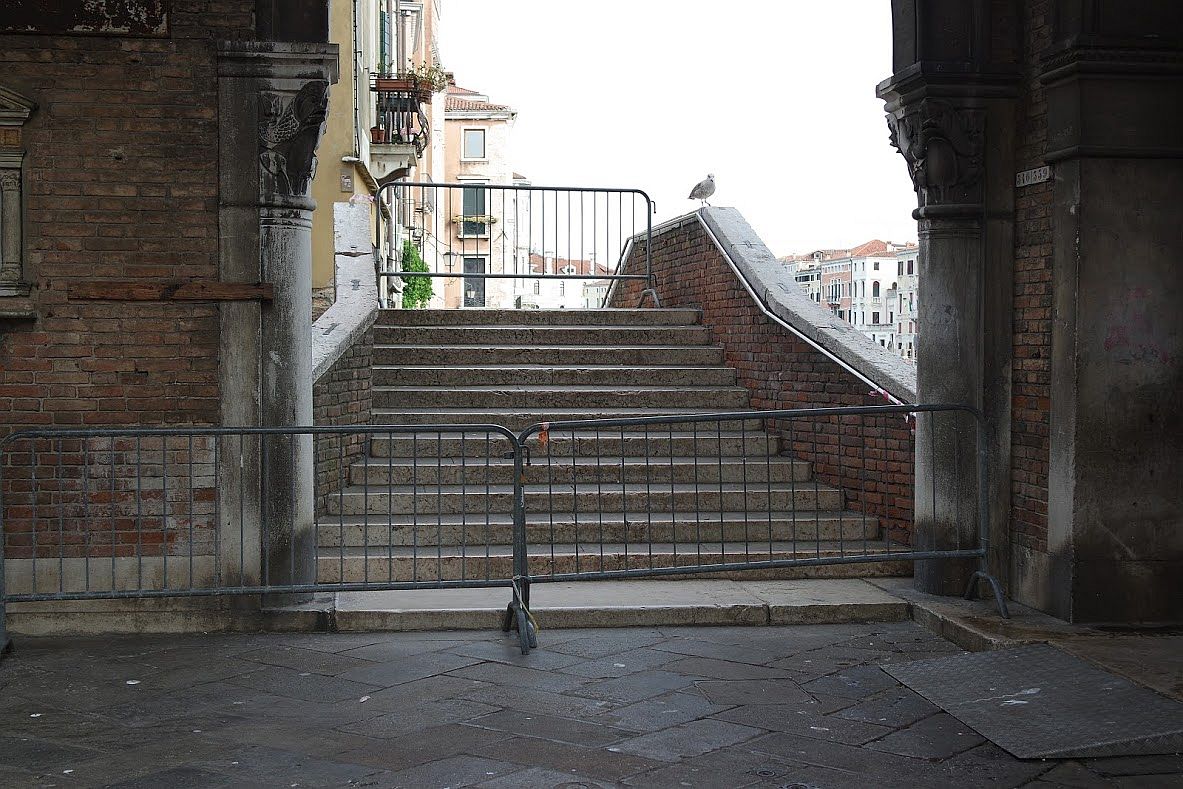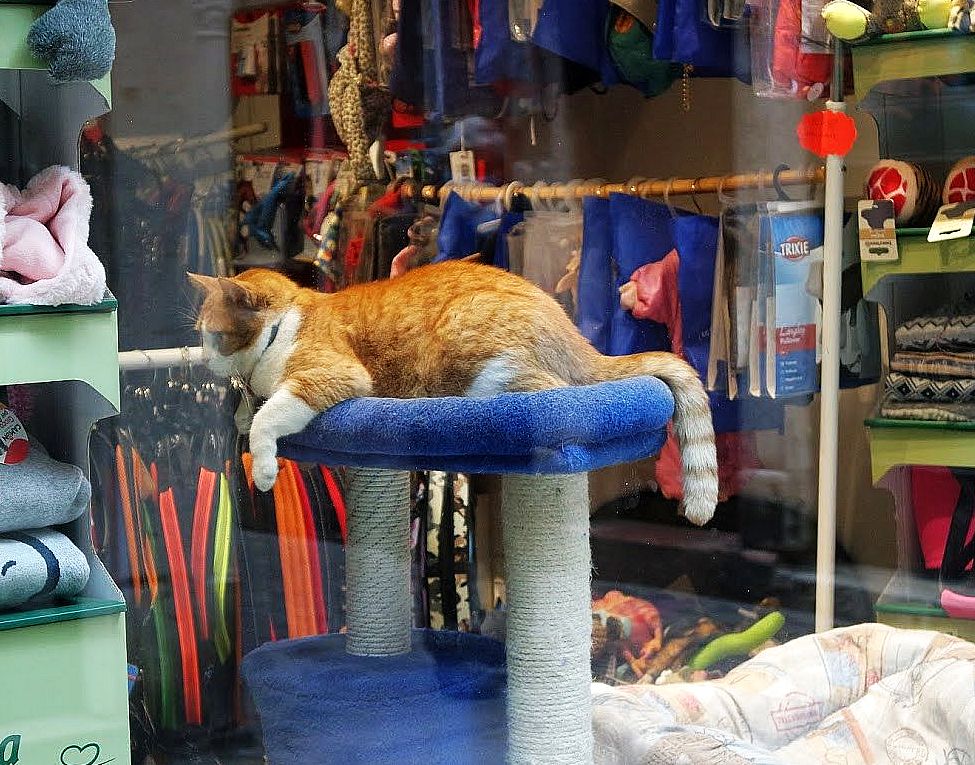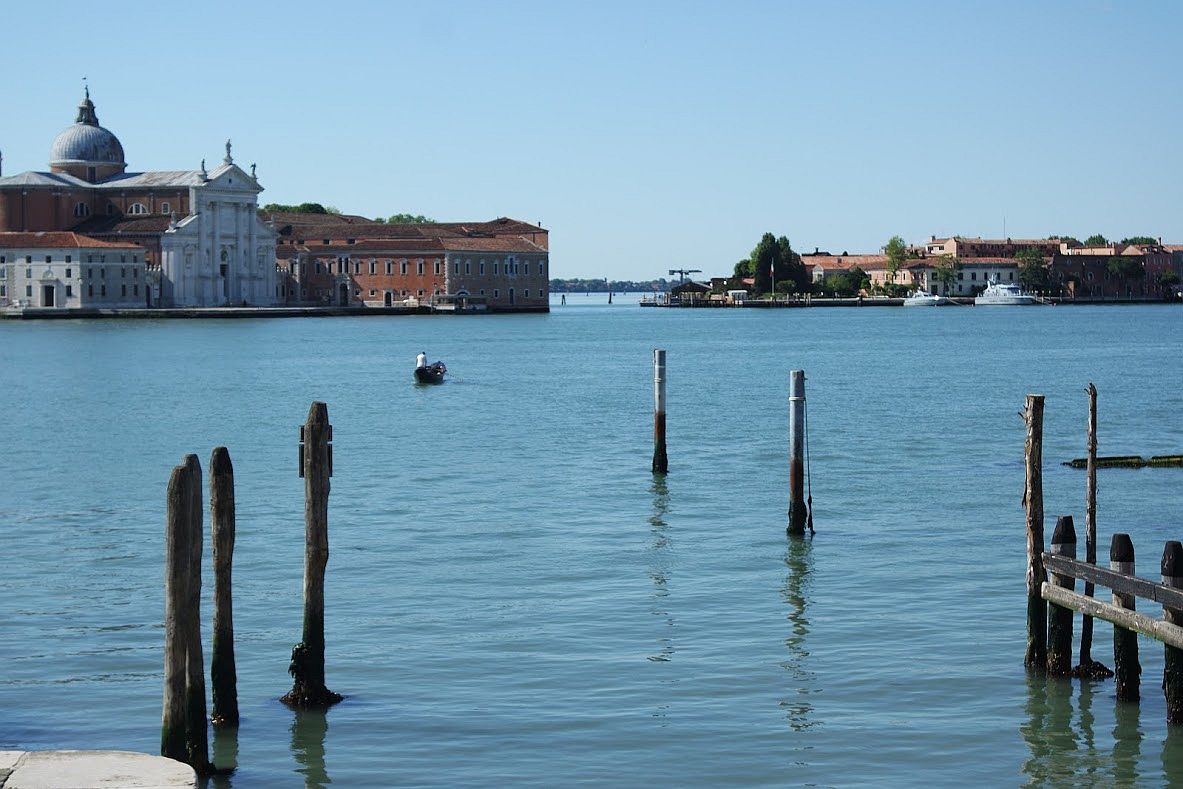
During the past week or so life has finally “re-opened” after lockdown, and the process has felt strangely like the way you felt the first time you tried to skate.
Put another way, everything is still a little awkward.
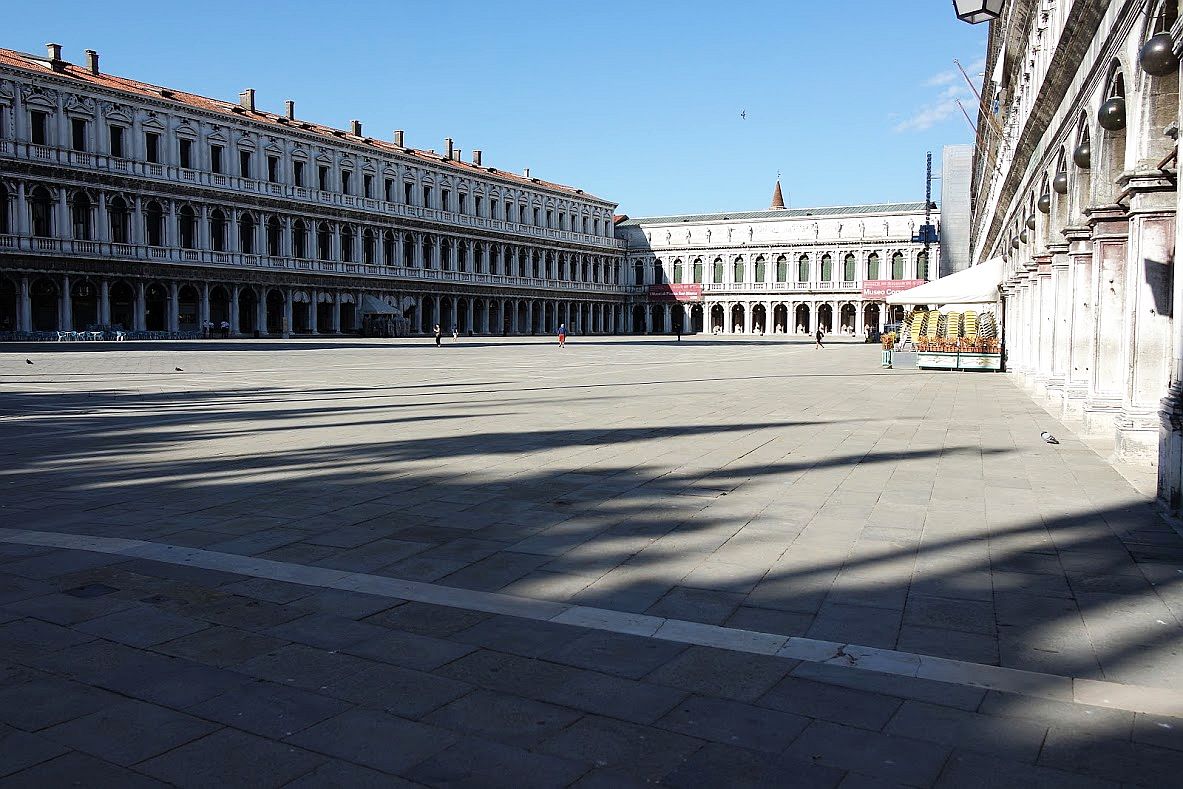
So we’ve been upgraded now to Normalcy 2.0: Shorter lines at the supermarkets, at least occasionally, and sometimes no lines at all (I do not understand this — under quarantine the lines stretched for miles. Have people stopped needing to eat?), but you still must wear a mask and gloves when you enter. Masks are required only in enclosed spaces where maintaining social distance is difficult, though many people, including me, are still wearing masks out on the street. More people are outdoors, of course — the end of lockdown and beautiful weather guarantee it. Cups of espresso are available everywhere. I must be dreaming.
Our favorite little restaurant finally re-opened, so we celebrated the other evening by stopping for dinner; we were the only — perhaps even the first — customers, happily munching undercooked pizza because we were so glad to get back in the groove, and also helping the owner do the same. She’d been closed since December, thanks to the apocalyptic acqua alta of last November 12 (anybody remember that?)
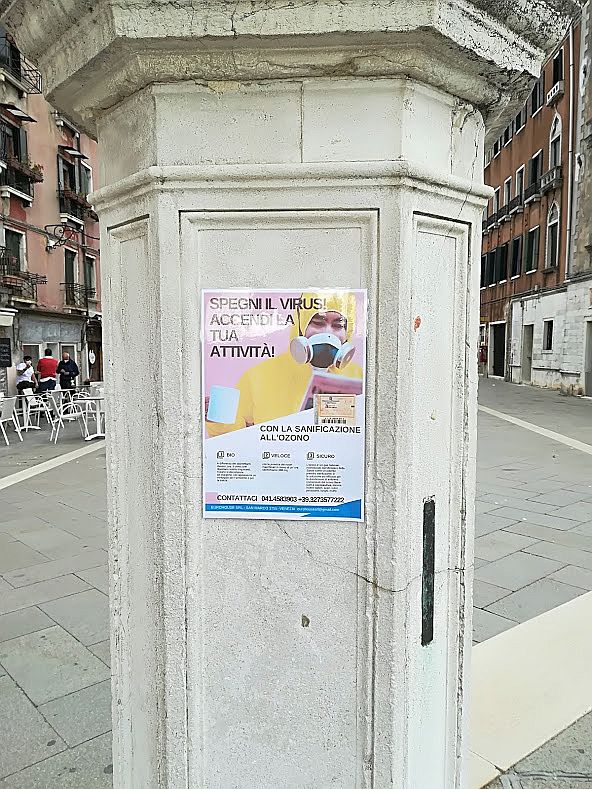
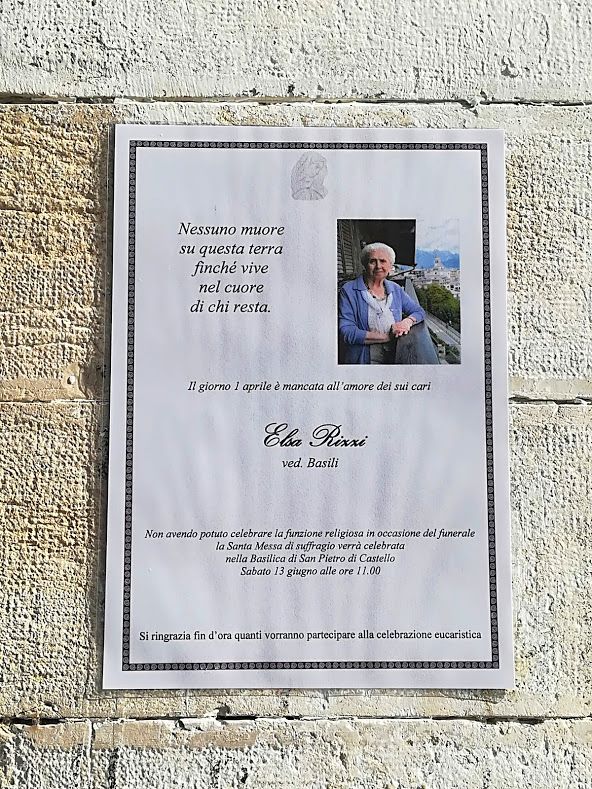
A few tourists have begun to appear, which ought to be the best indication that the worst is over. And yet, although I know that the city needs a certain quantity of them in order to survive, seeing them inspires the same dread as seeing the water in the glass on the dashboard in “Jurassic Park,” quivering from the heavy tread of whatever dinosaur was approaching. Yes, I have just compared tourists to saurian predators. Funny how you think you want something and then it turns out you really didn’t.
And so one of the prime features of Normalcy 1.0 is still active: The slob tourists. Some people were hoping that now, seeing that the decks had been cleared, the city could attract the elite tourist (how many times have I heard this dream? About as often as I hear how we’d spend the millions we’d win in the weekly lottery, and with the same probability). Of course we want tourists like Grace Kelly and Cary Grant, but instead we get two German men who went swimming in the Grand Canal a few days ago.
Odd, in that this stunt is usually the specialty of drunk American boys in the hottest depths of summer. But who can search the intricate pathways of the touristic brain? And this pair was not the first to succumb to the lure of the canals. On May 26, back in the early days of Phase 2 when travel was just beginning to be permitted within the Veneto, two young women from near Vicenza were seen lounging in their swimsuits on a fondamenta in Cannaregio, enjoying the sun and evidently anticipating a little dip in the rio degli Ormesini. Offended locals alerted the police, who came to explain the situation to them and impose fines (250 euros / $282) on each of them.
As for the German men, their being 40-something adults complicates the equation, as well as their not being intoxicated, as does their sang froid in answering a bystander’s question as to what the heck they were doing with another question: “What the hell does it matter to you?” (freely translated). Yes, they managed to have their little swim, and I hope it was everything they’d dreamed of because they were nabbed, each fined (450 euros / $508) and marked as forbidden to return to Venice.
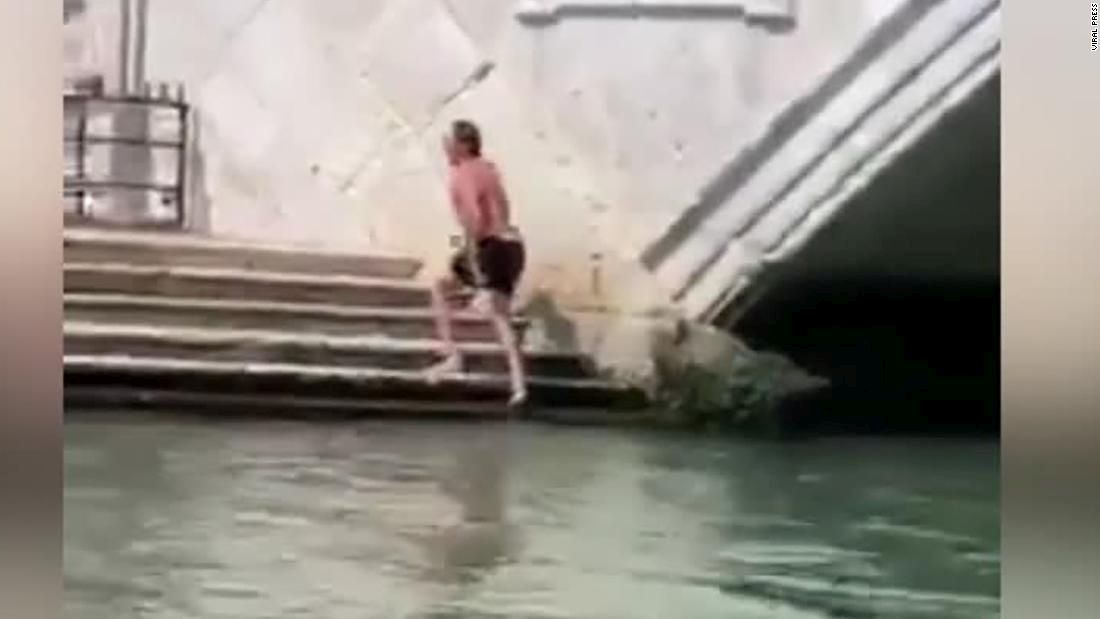
It’s something to ponder: Back in the olden days of last year, the loutish tourist (turista cafone) seemed to appear as the occasional freak in the midst of the masses. You think, well, when there are 50,000 visitors a day, it’s probably inevitable that a few boors will slip through. But evidently the boors are free spirits who have no need of concealing themselves. I’ve begun to wonder if there could be a factory somewhere that manufactures these people and sends them at random around the world. Do they have homes and jobs and normal lives? I just cannot picture them in some regular place, like regular people.
Why am I going on about this? Because it seemed like we wanted tourists to come back. Now I, secretly, am beginning to rethink that. Of course businesses want them, I understand and respect that. More about that in a later post. But on a personal level, I’m going to confess that despite the many uncomfortable and inconvenient aspects of lockdown (starting with the fear of falling ill, or maybe dying, and ending with the total lack of cafe’s), I’ve already begun to feel a guilty little tremor of nostalgia for the peace and the quiet.
Yes, I realize I could find all I want in the Gobi Desert. But I like the canals as much as everybody from Germany and America and Italy and Belgium…..
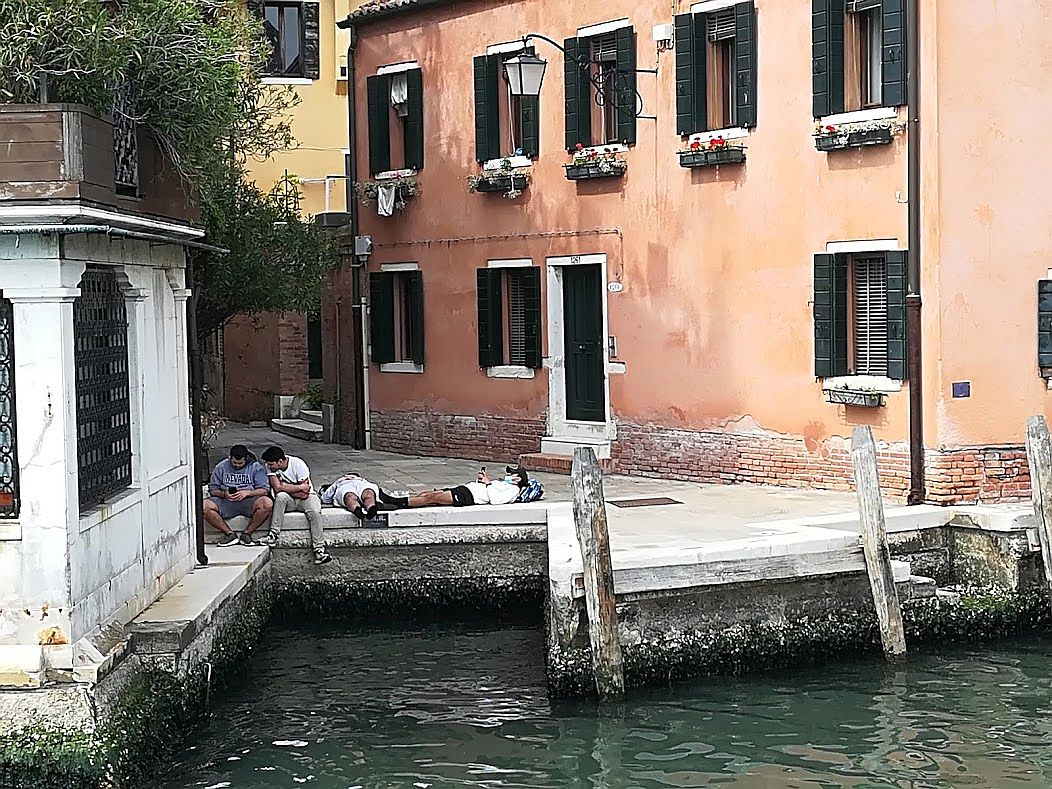
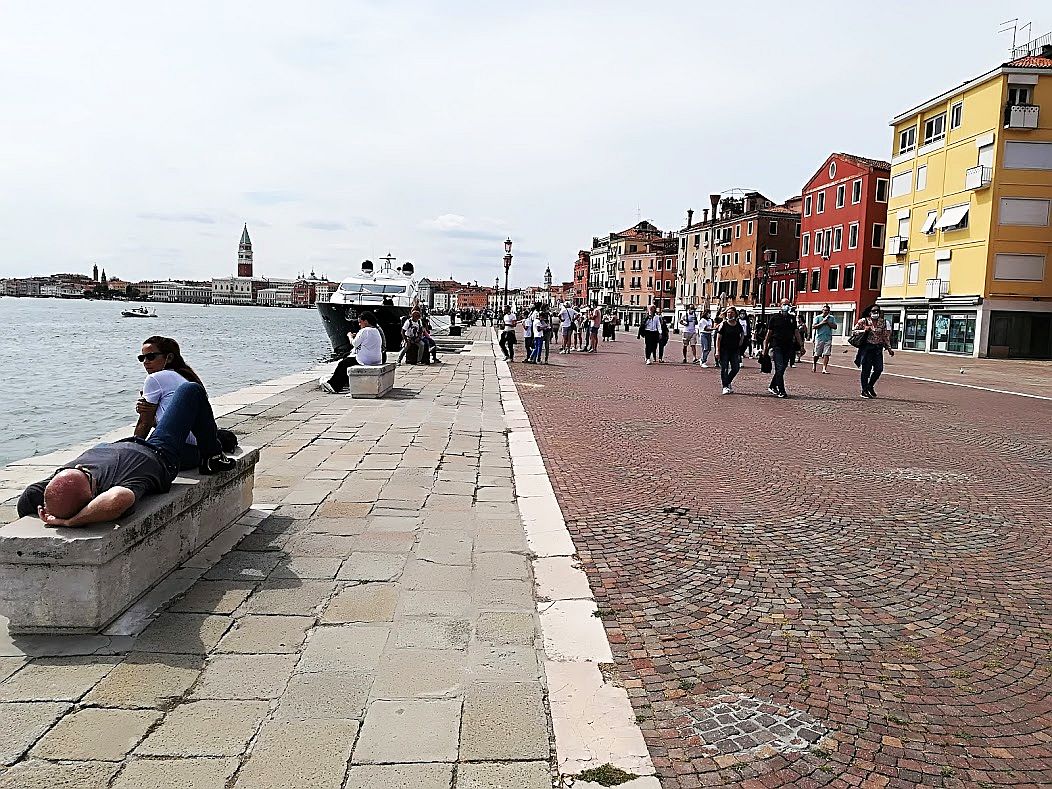
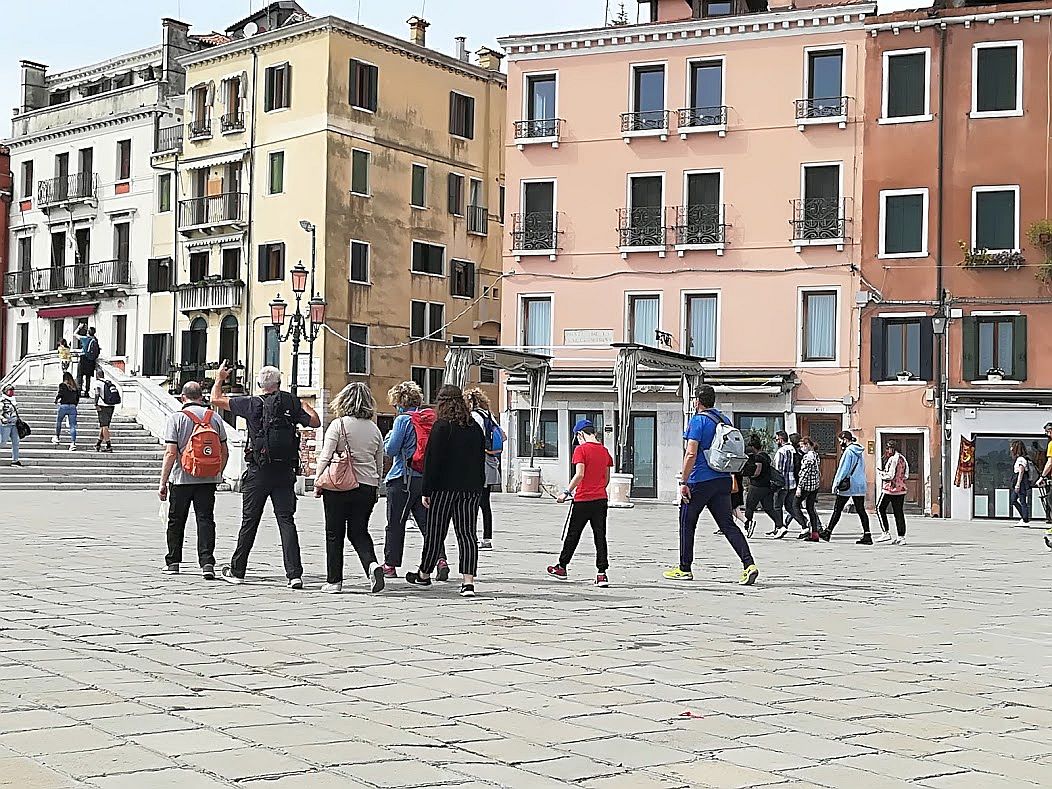
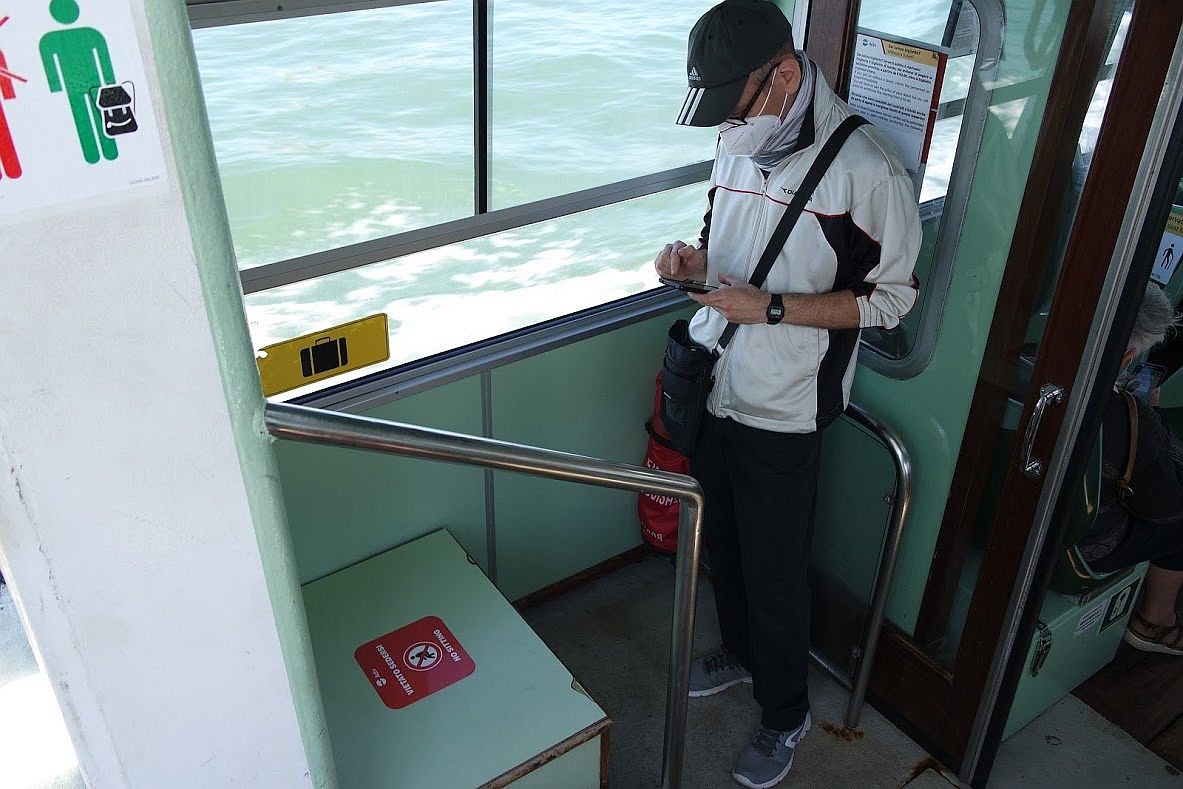
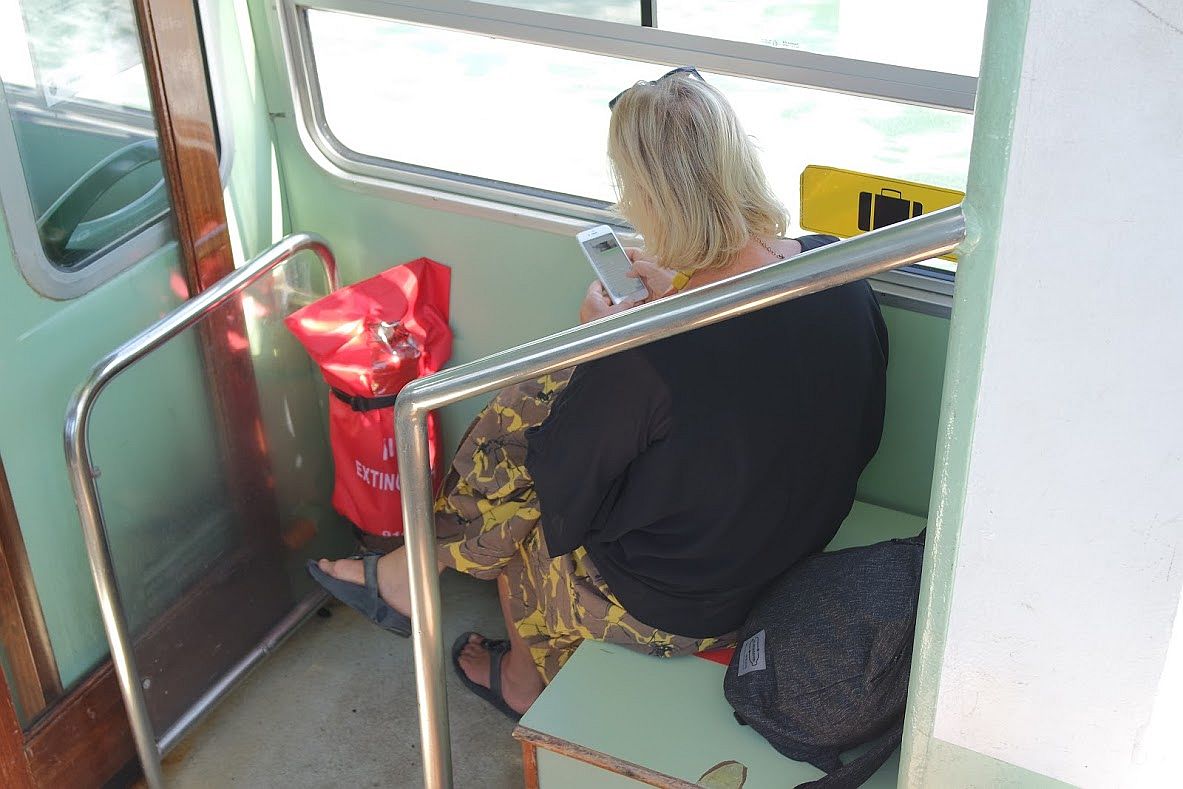
As it happens, I saw the same thing happen on the big #1 coming down the Grand Canal yesterday, but I intervened.
The interior of the cabin is organized with three seats facing three seats, etc. and in that case I had the free seat in the center of one row, but the seat facing me was red-labeled. The window seat was occupied, and the aisle seat was free. A woman enters with her young son, who might have been eight or nine years old. She parks her shopping trolley in the aisle, parks her son in the seat next to it, and parks herself in the forbidden seat in front of me. (Beat. Beat. Beat.)
“Why are you looking at me?” she asks. “Because you’re sitting in a seat with a red label.” She then rebuts, not unpleasantly but with complete conviction, that she has to sit there, she has no choice, because something something son something aisle. I say “The seat has a red label, you’re not allowed to sit there.” More reply. “So,” I say, “if everybody just does whatever they feel like, there’s no point in having the labels, is that right?” And I get up and walk over to Lino across the aisle, and just stand until another seat opens up.
Later, when I explained why I had been standing there, he said “Wrong! You should have told me!” (Unchain the Lino!) Or I could have gone to tell the marinaio, who ties up the boat at each stop, and he would have come and enforced the rule. They actually count how many people disembark at each stop, and count the same number of people boarding, after which they close the barrier.
I’ll keep these options in mind for my next experiment in the new order of things. Glad to know I’ll have backup. The new normal is looking kind of interesting.
